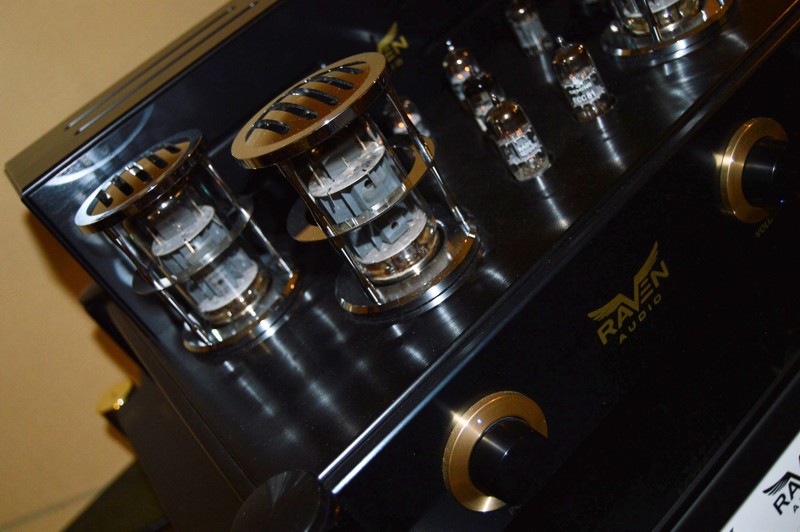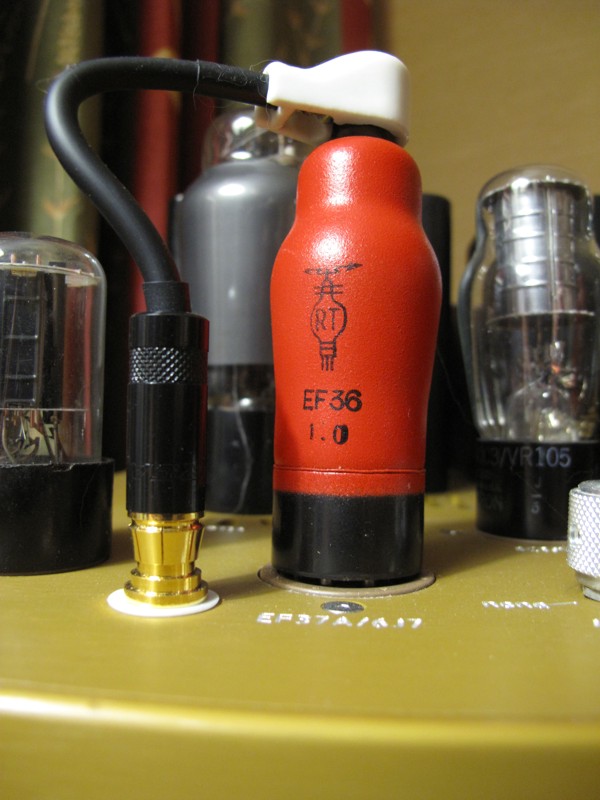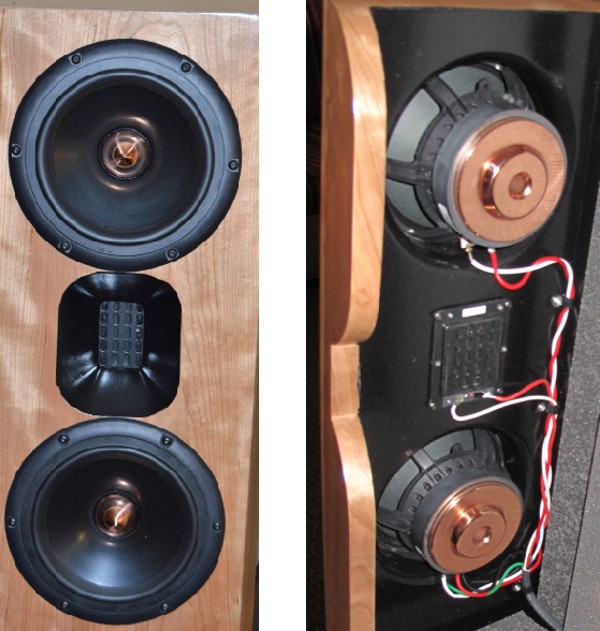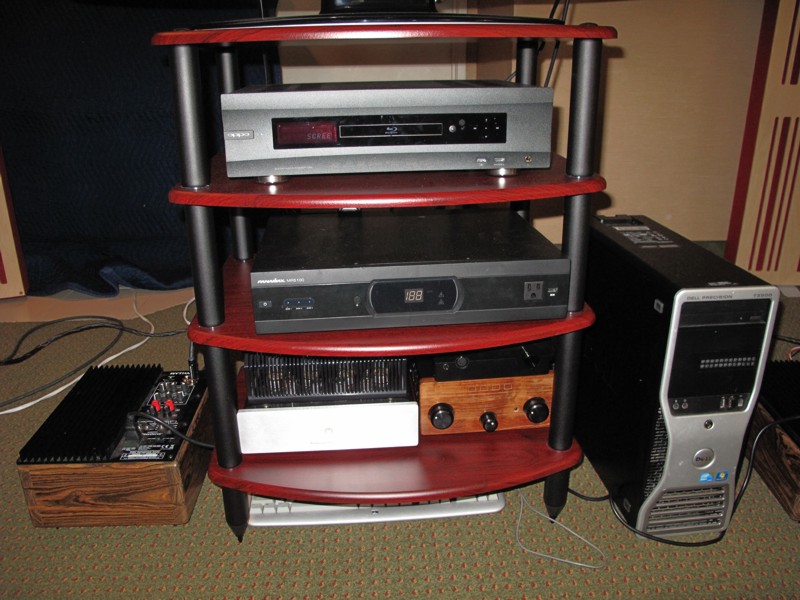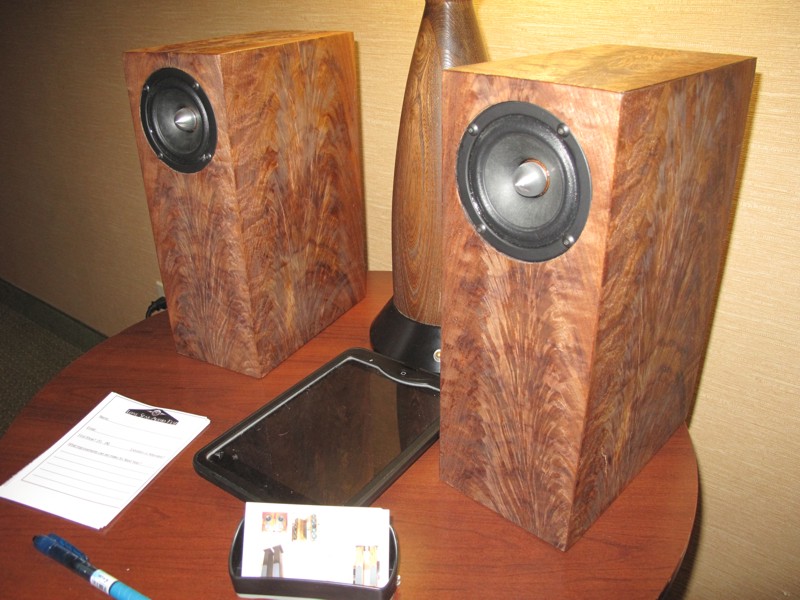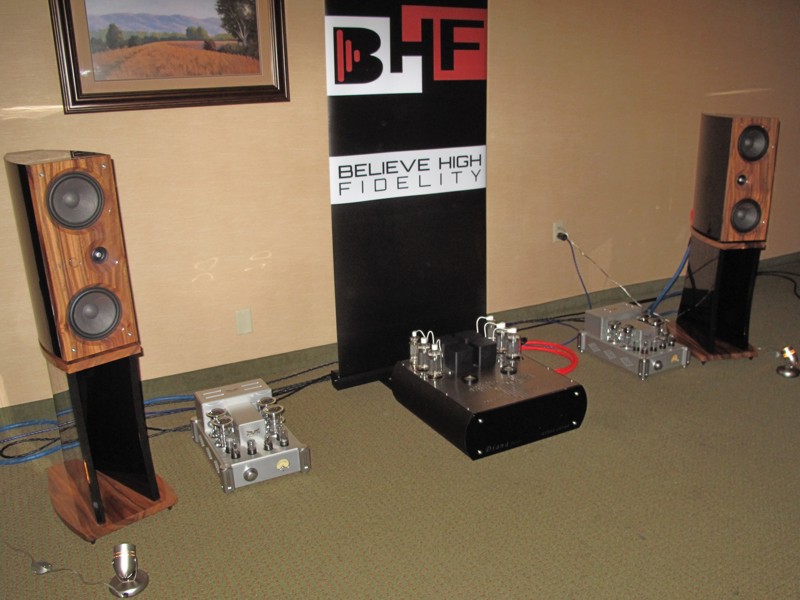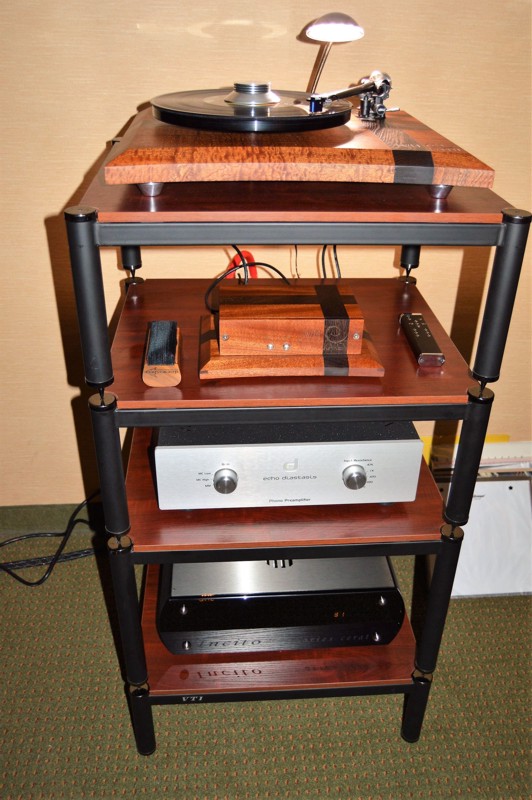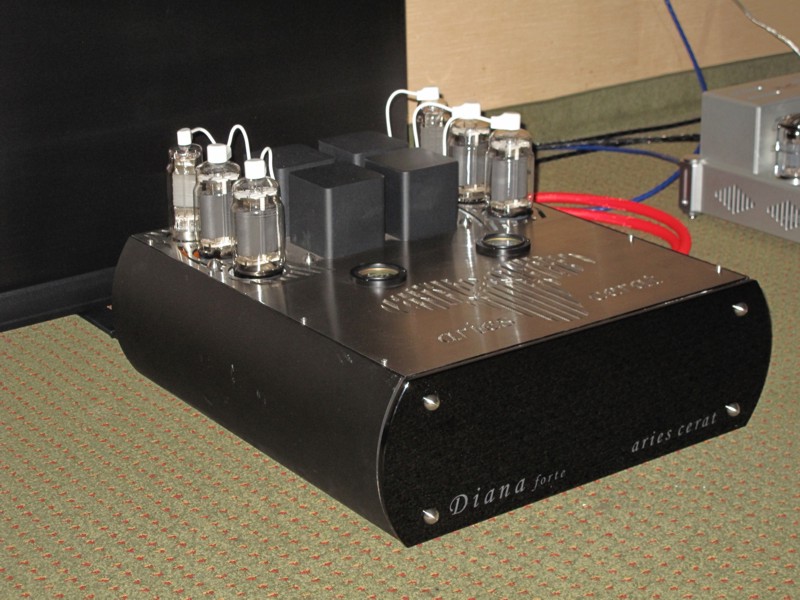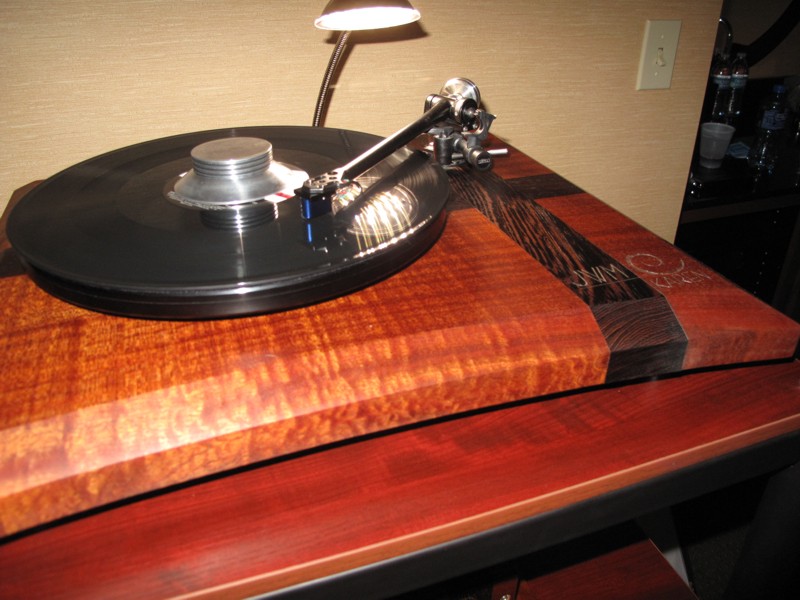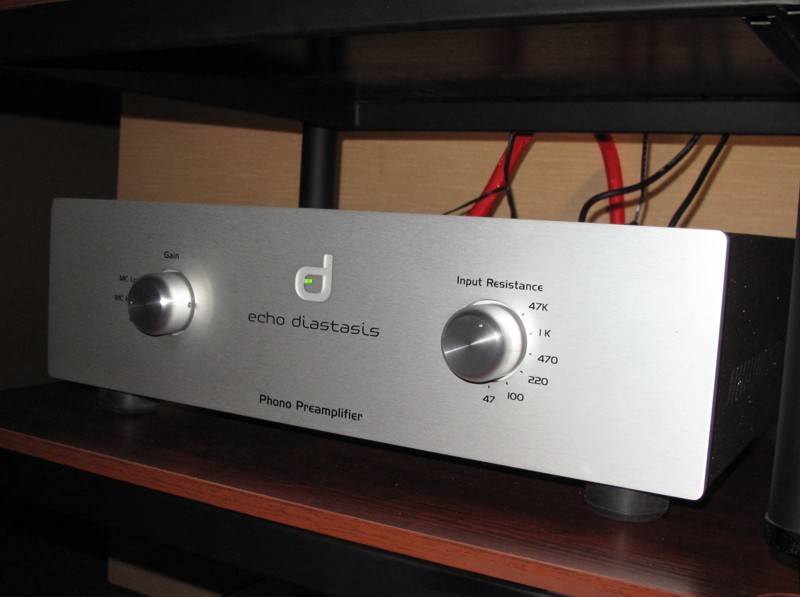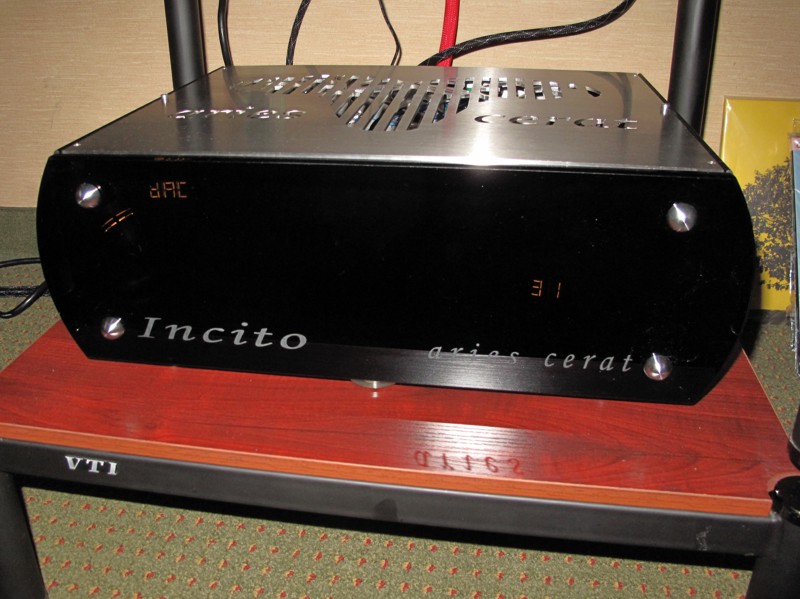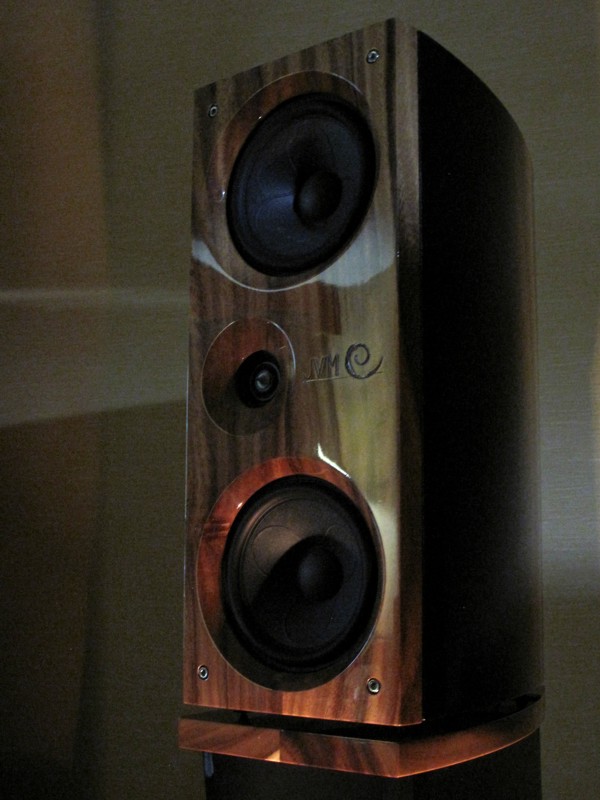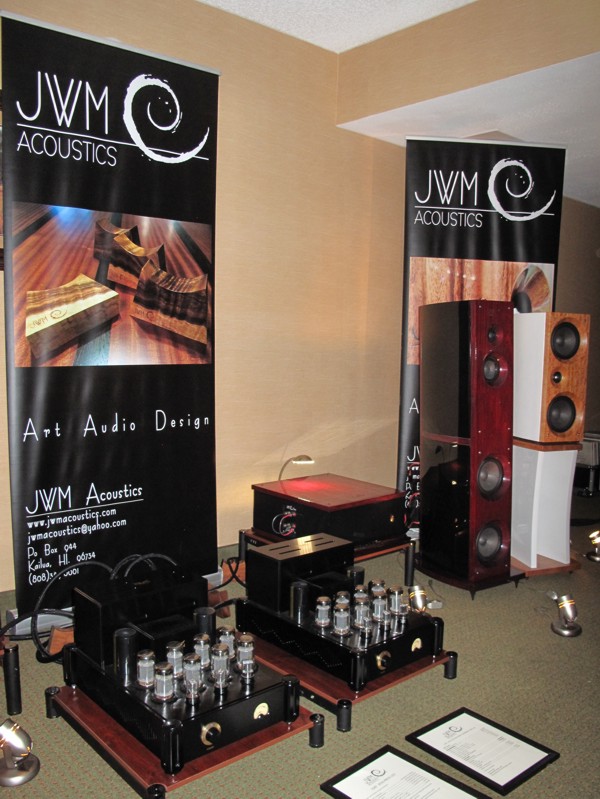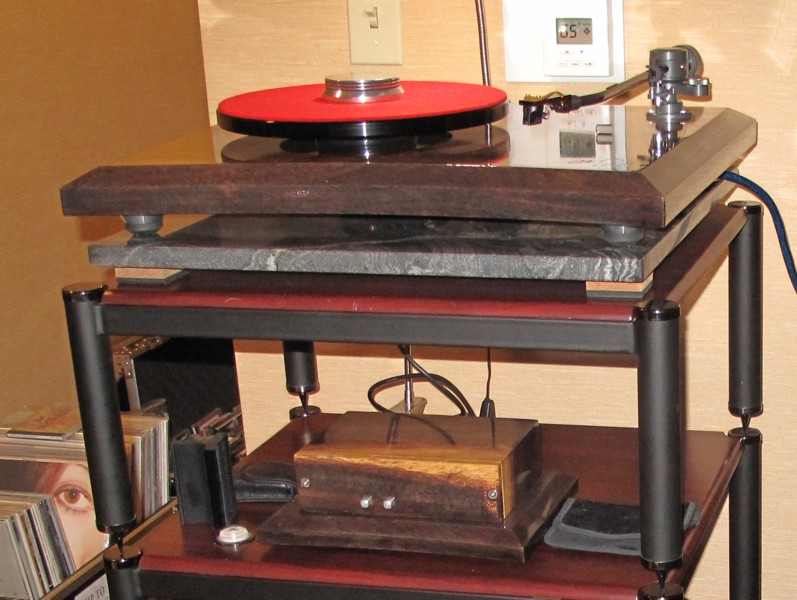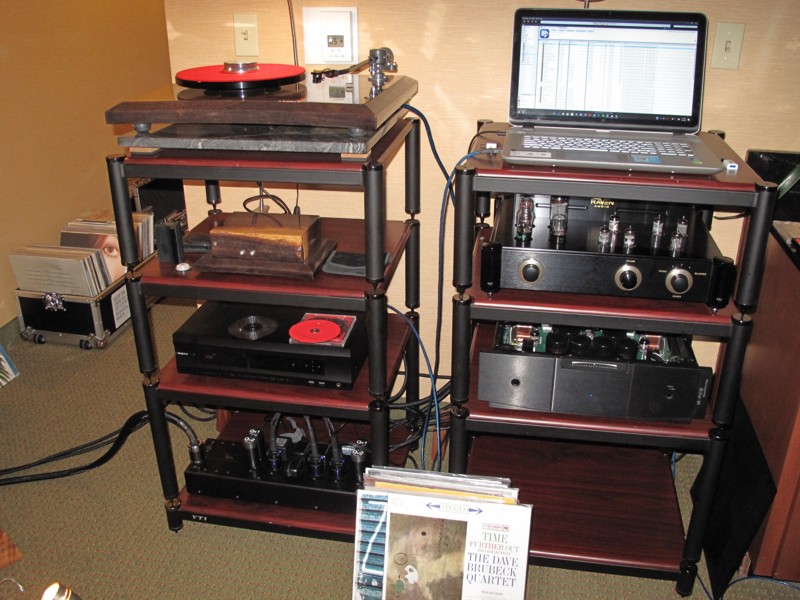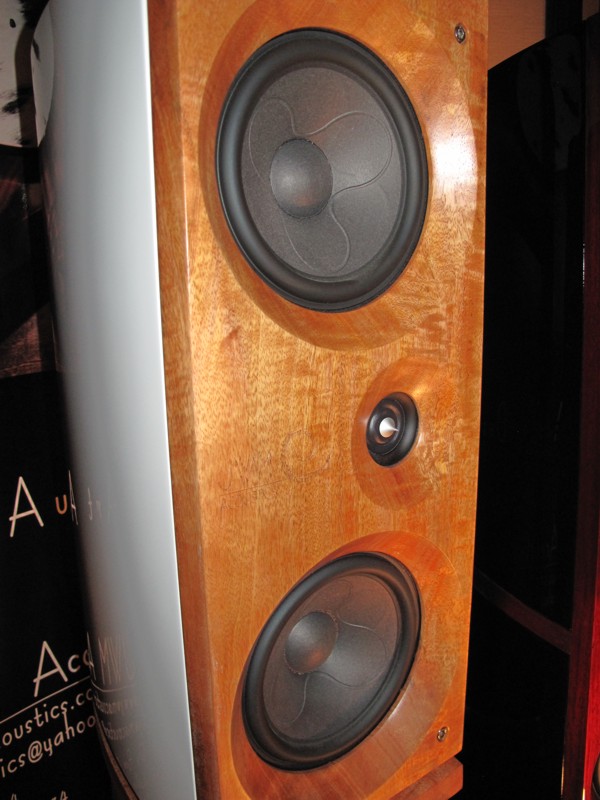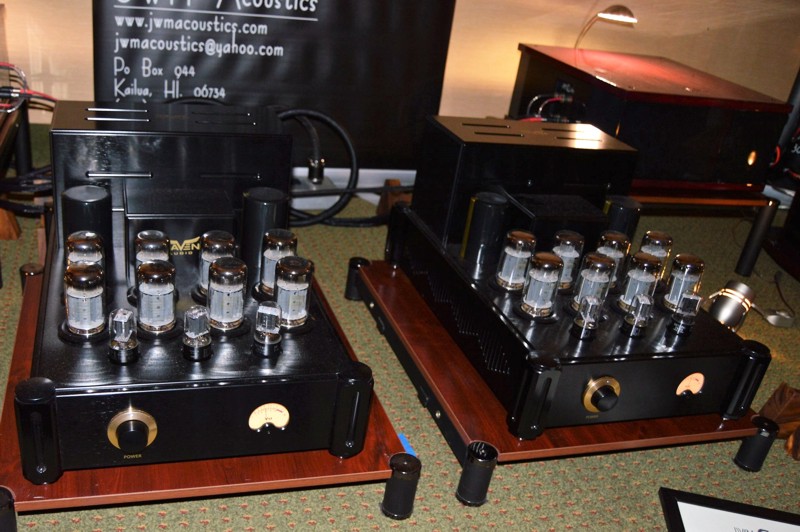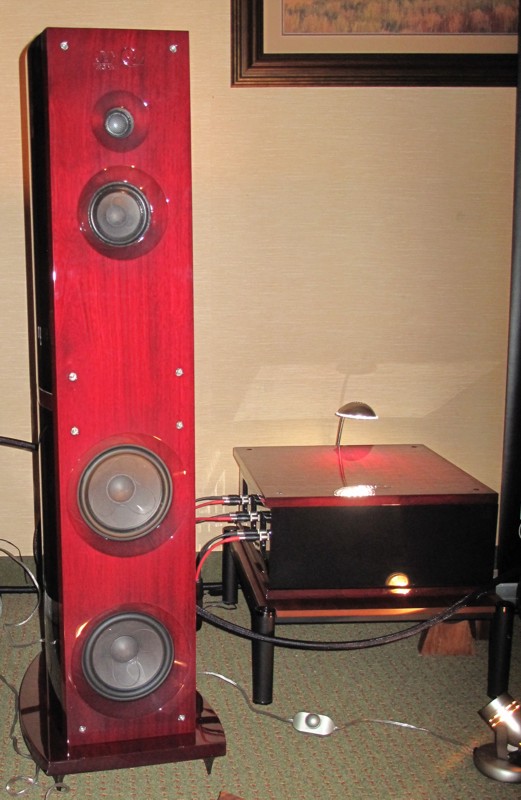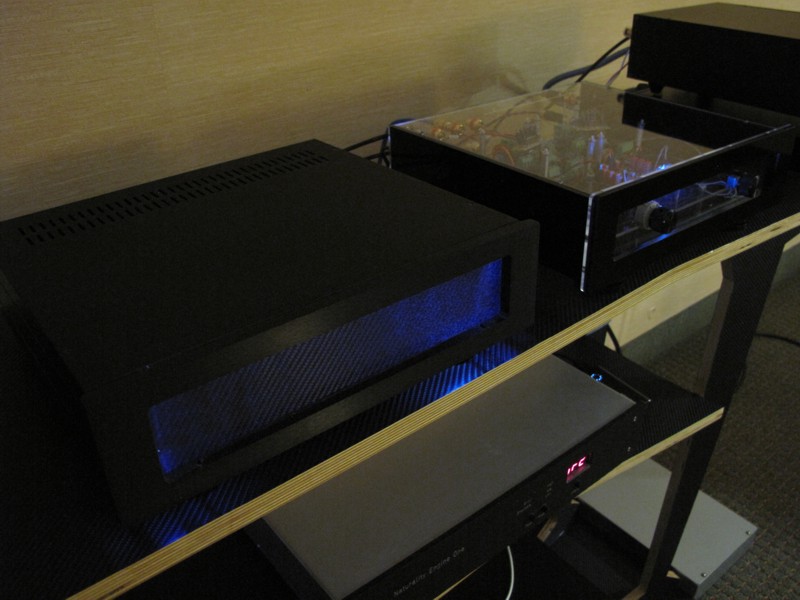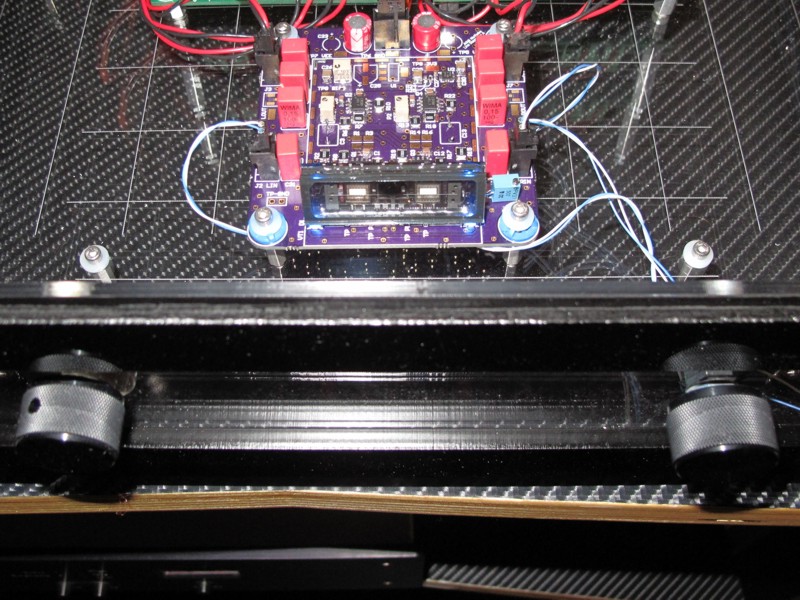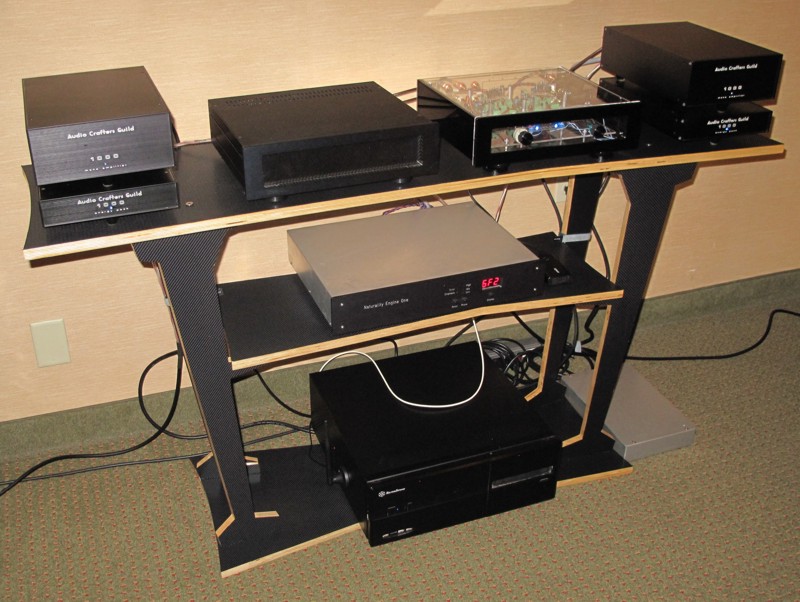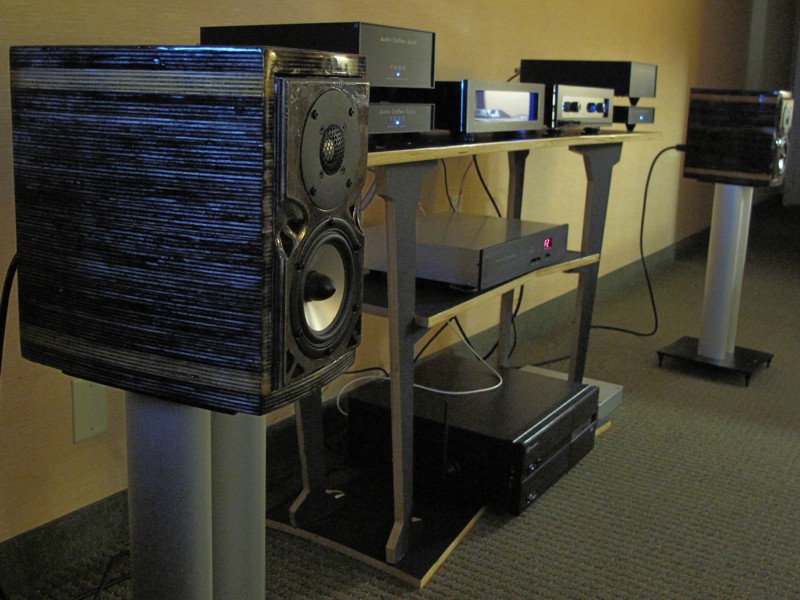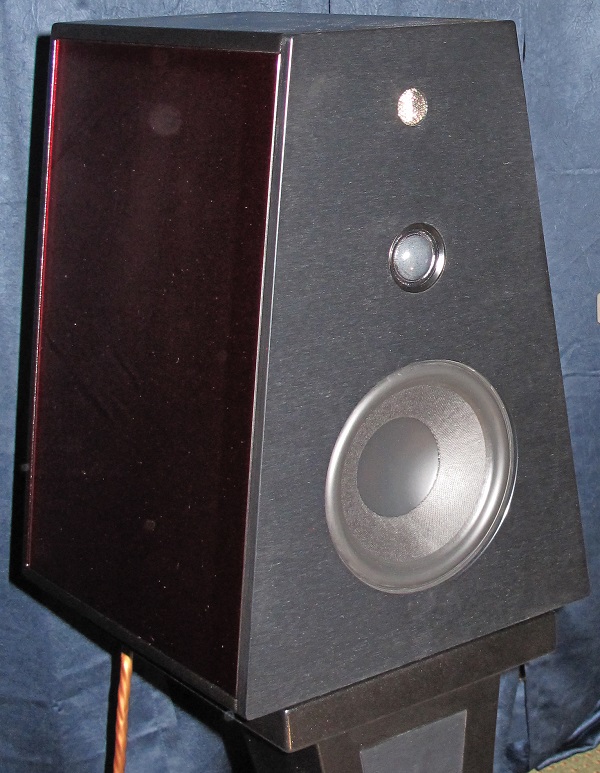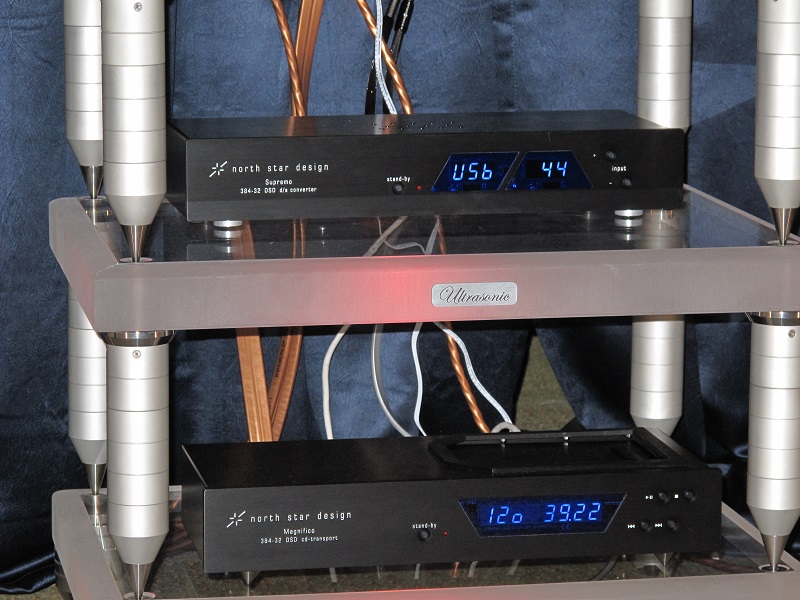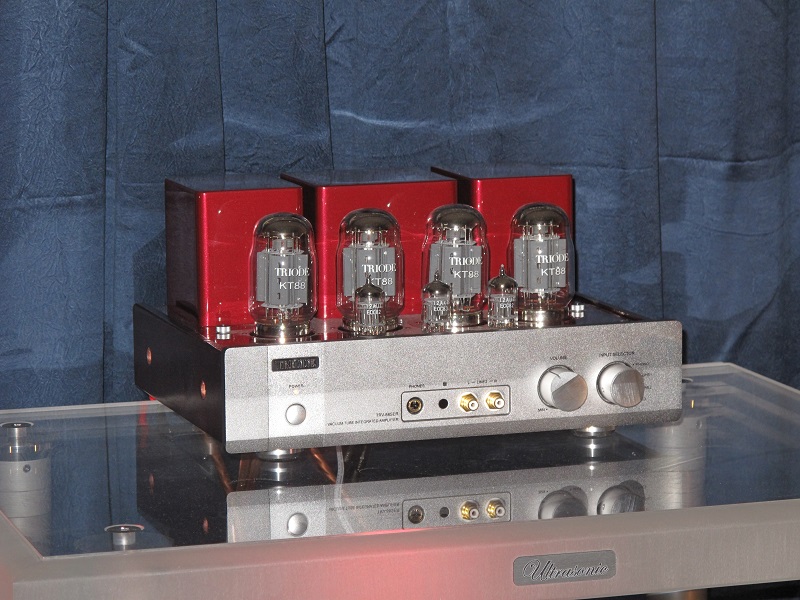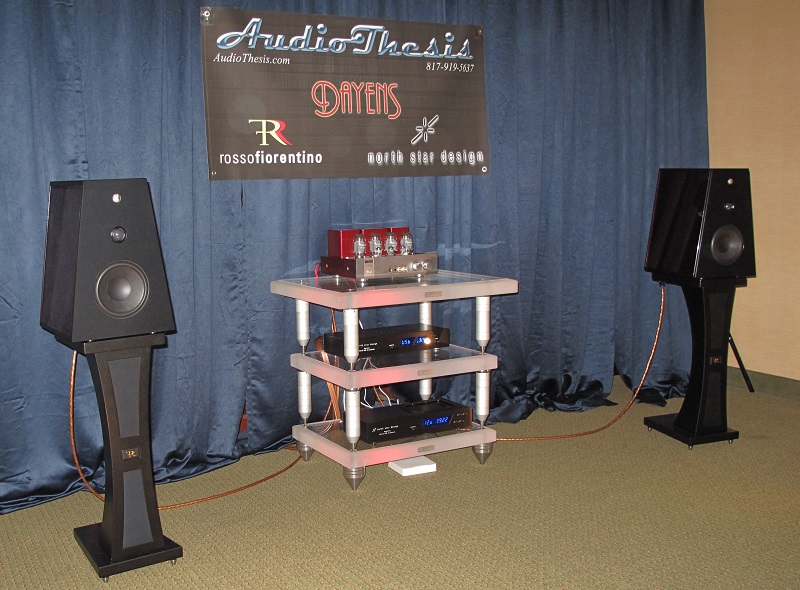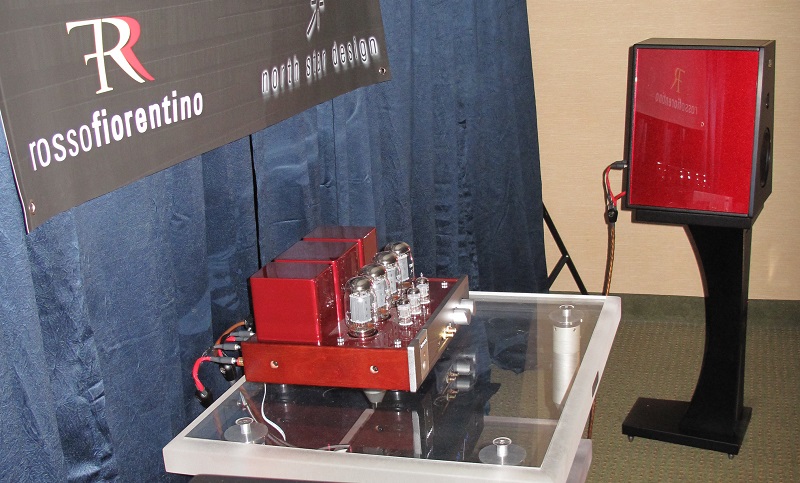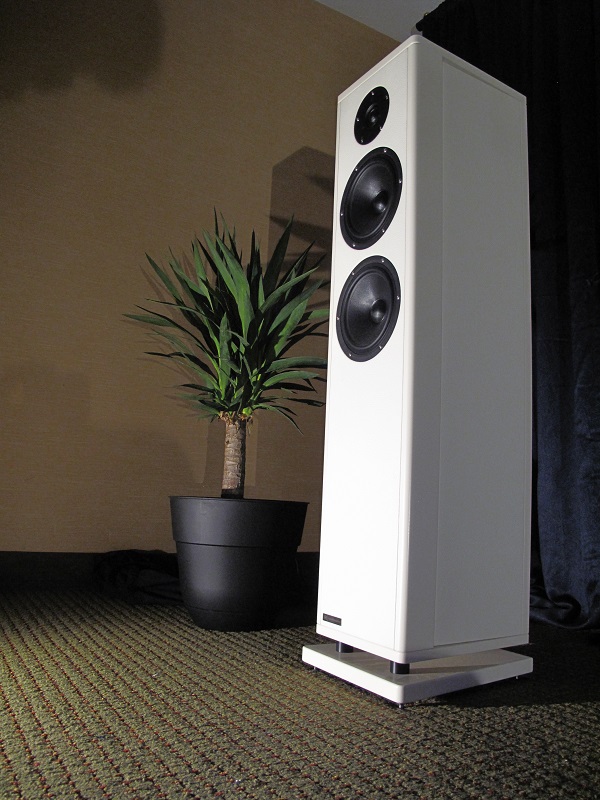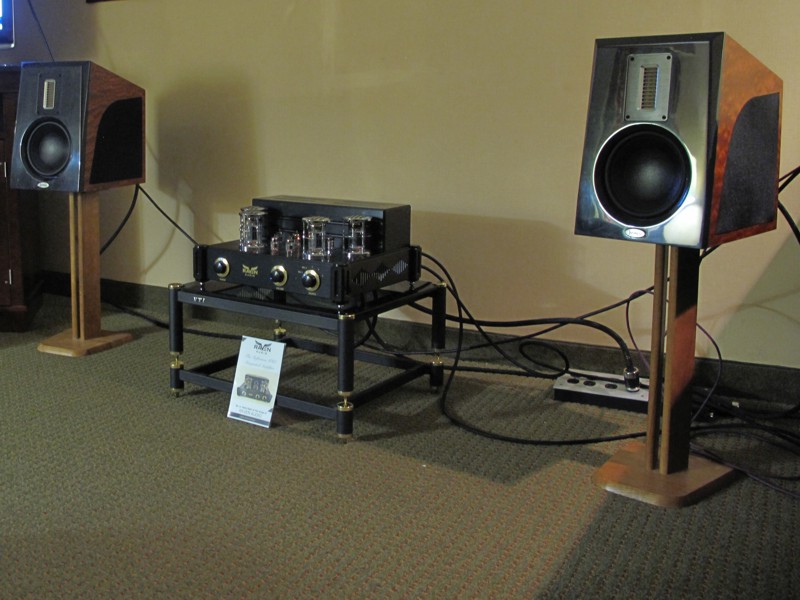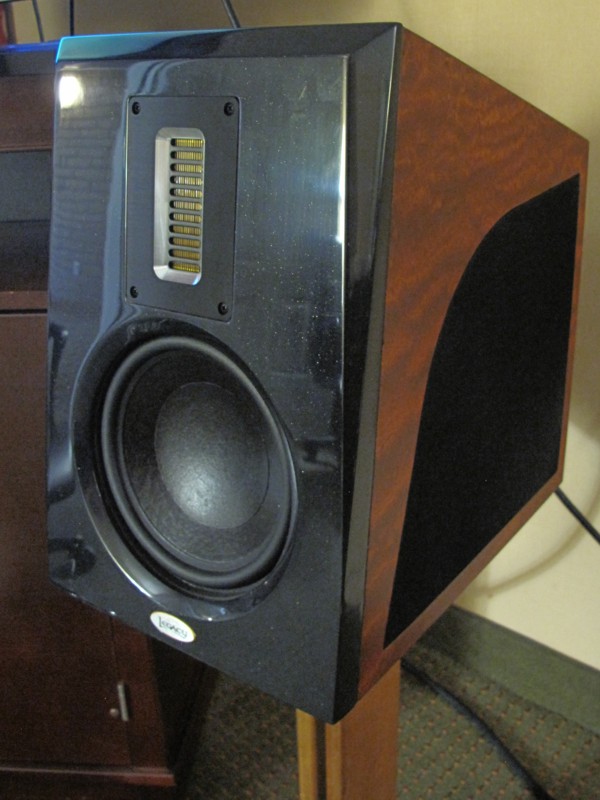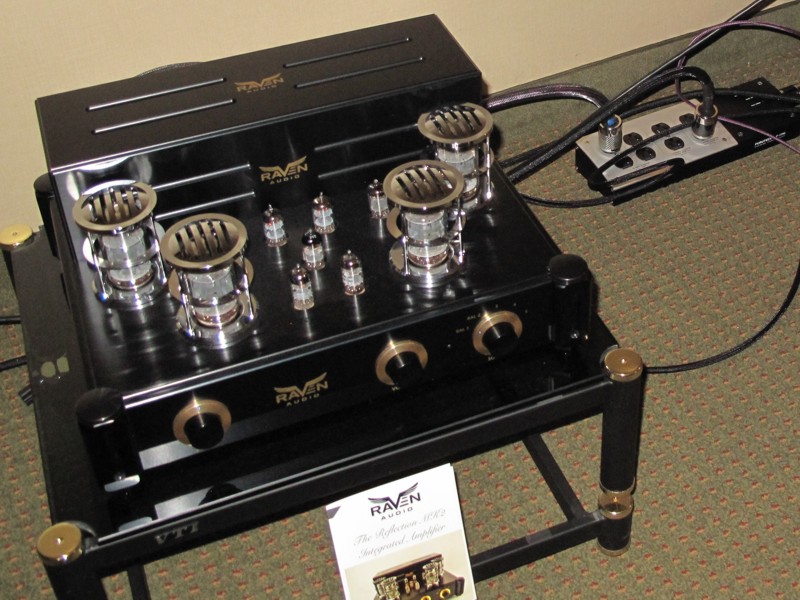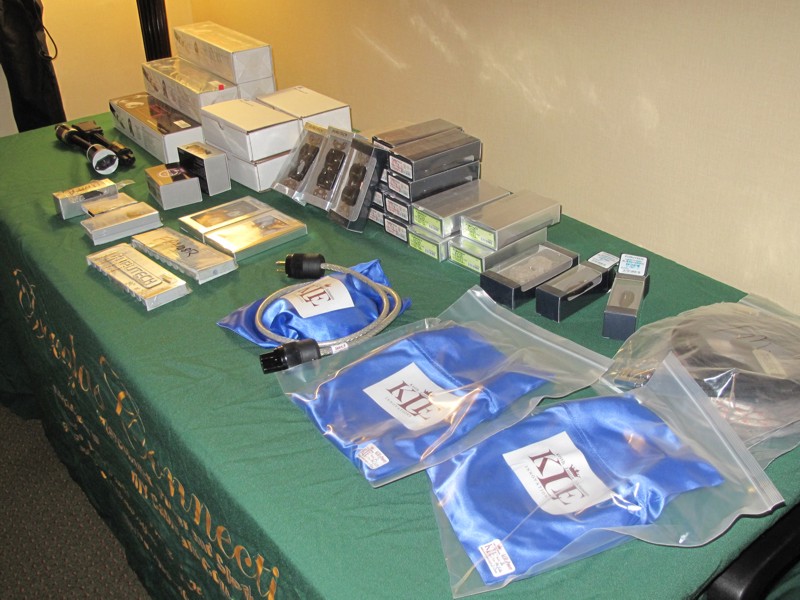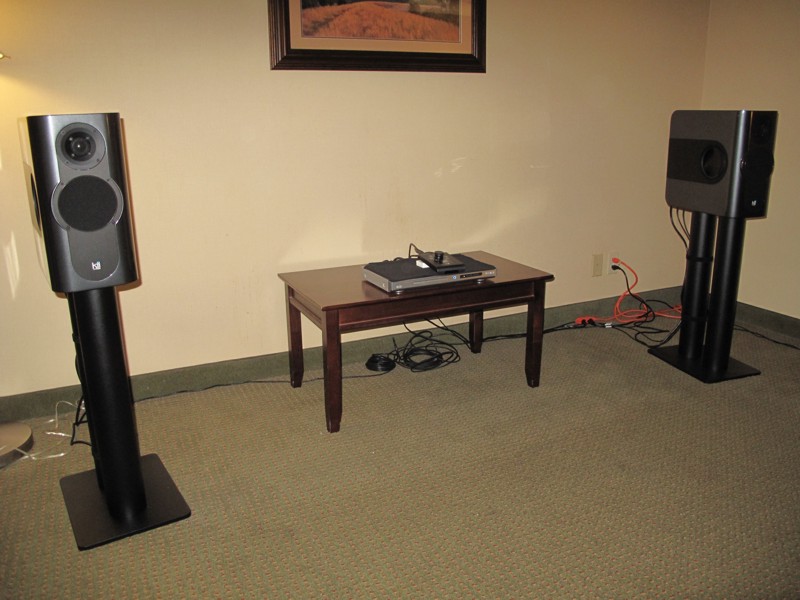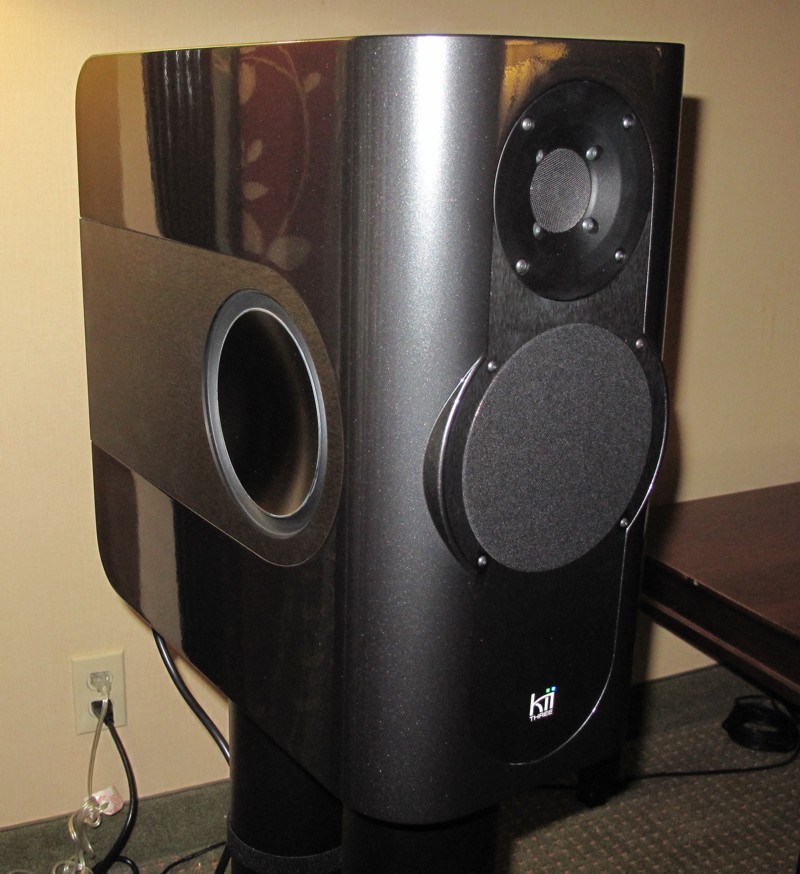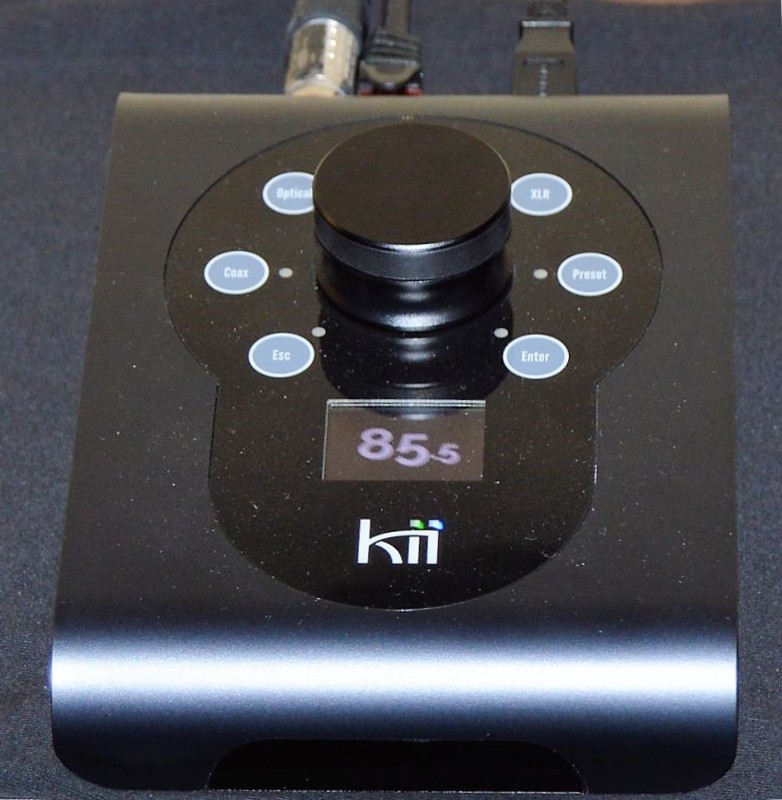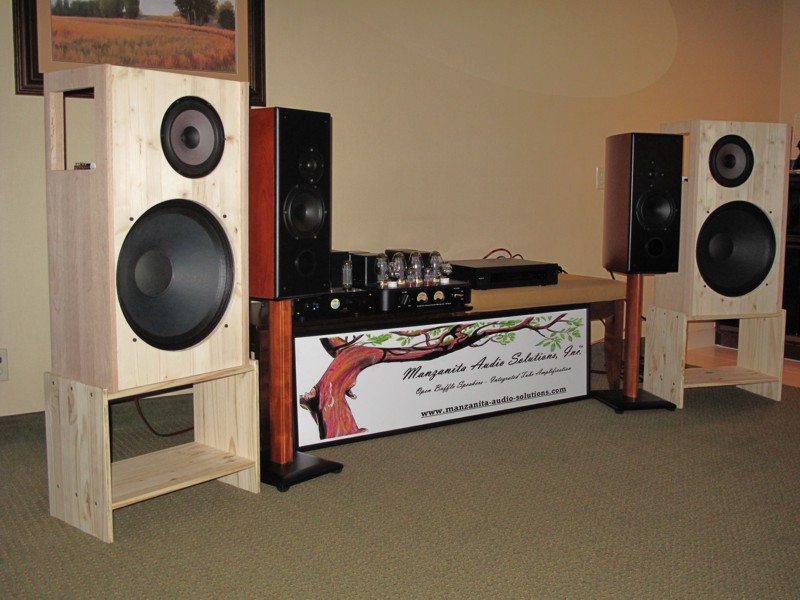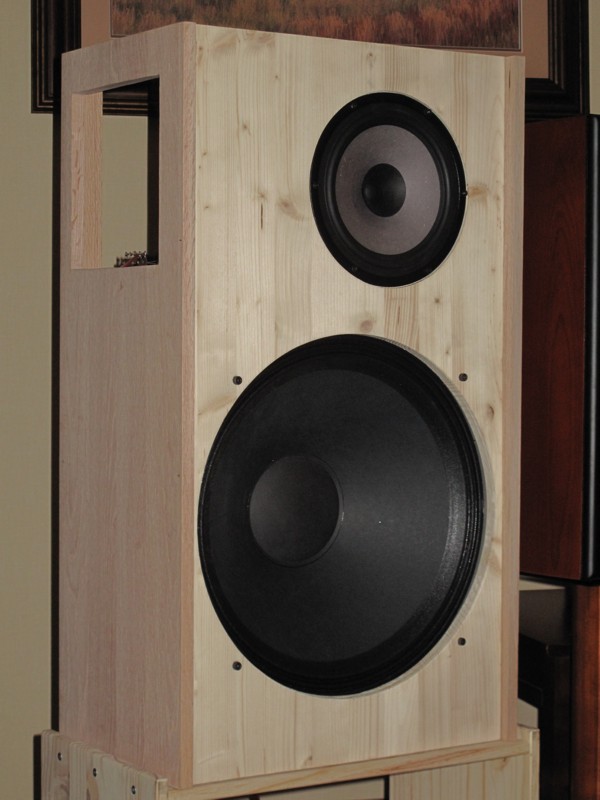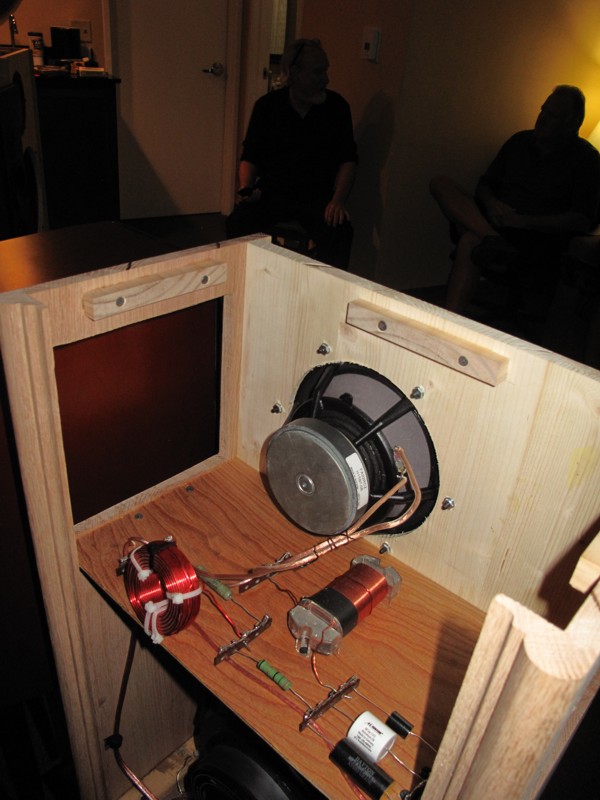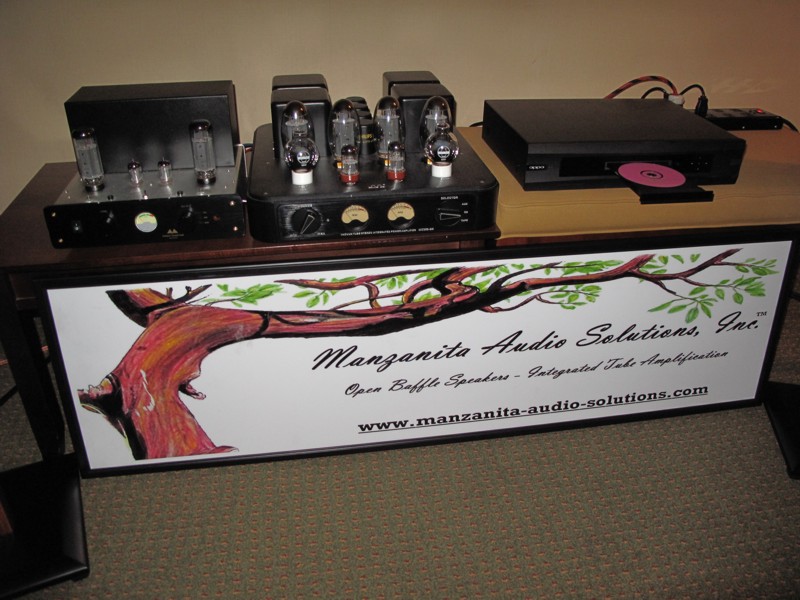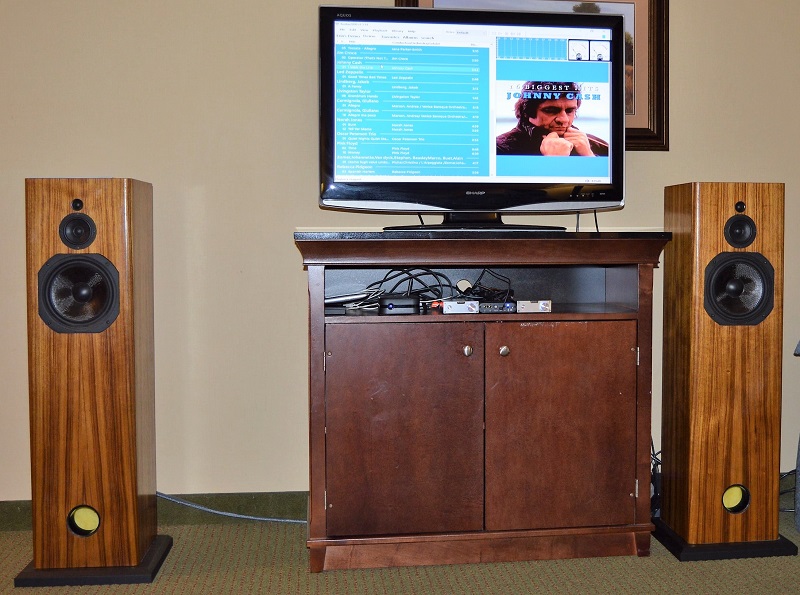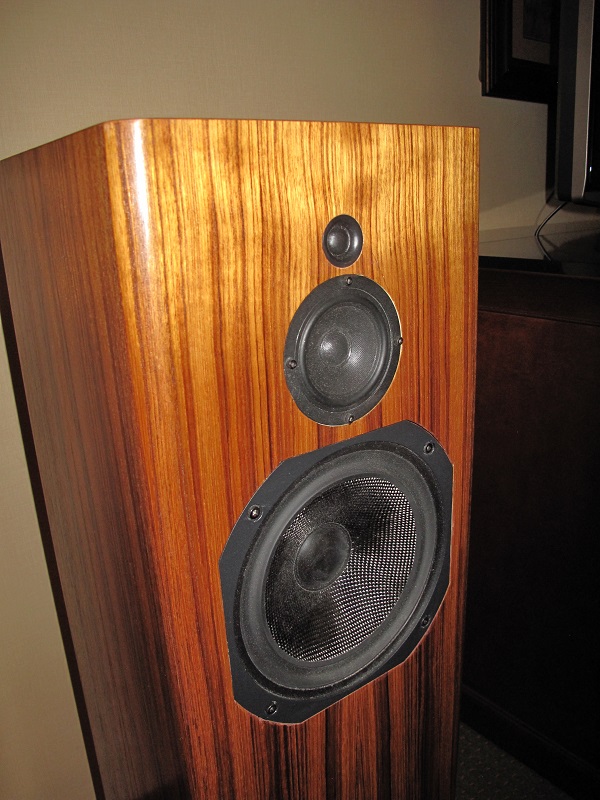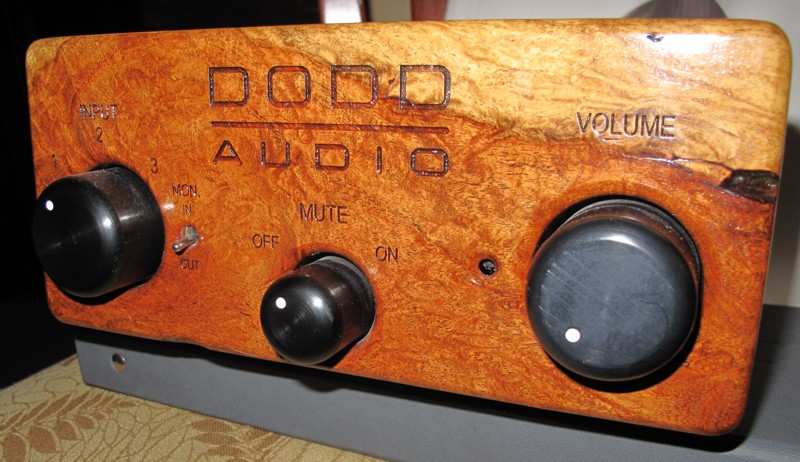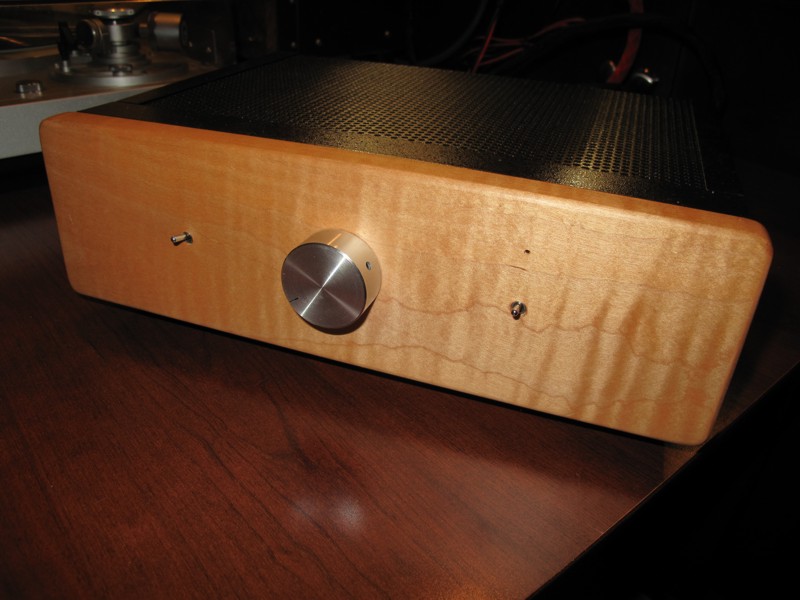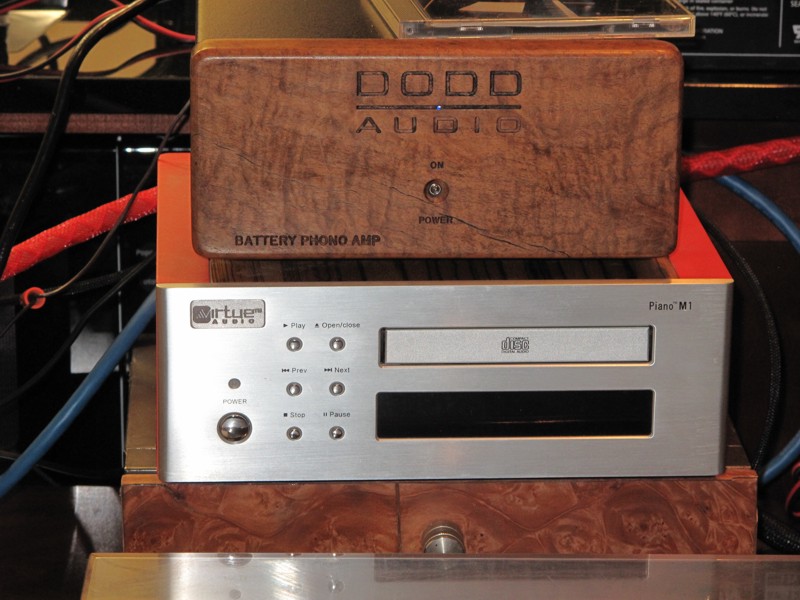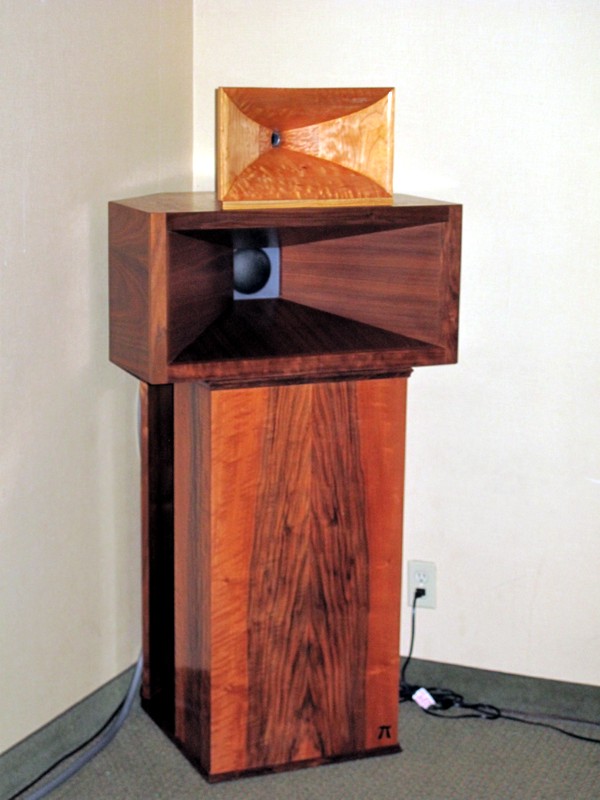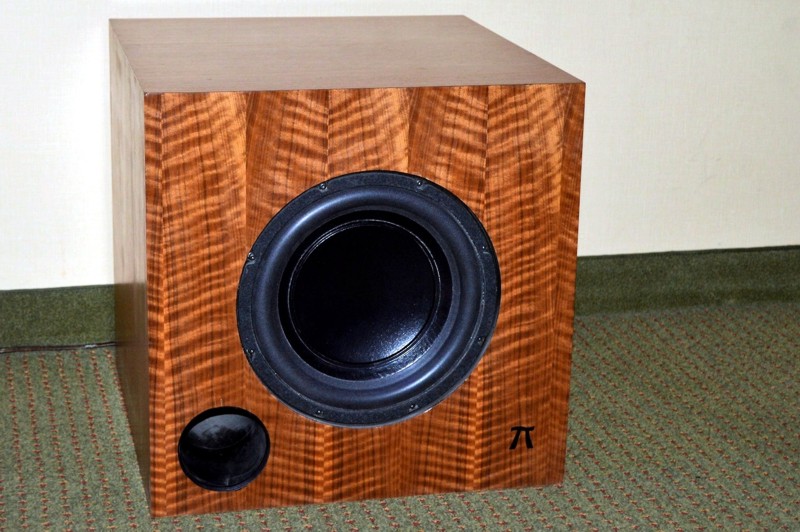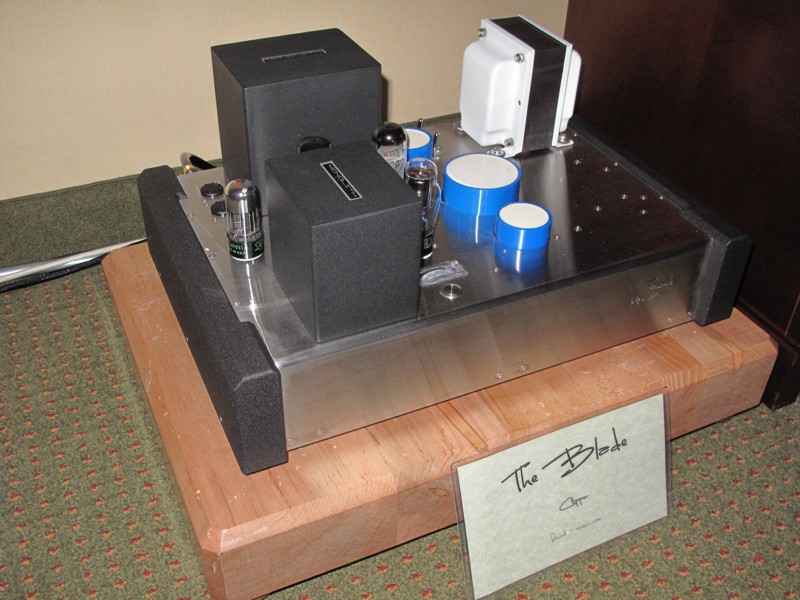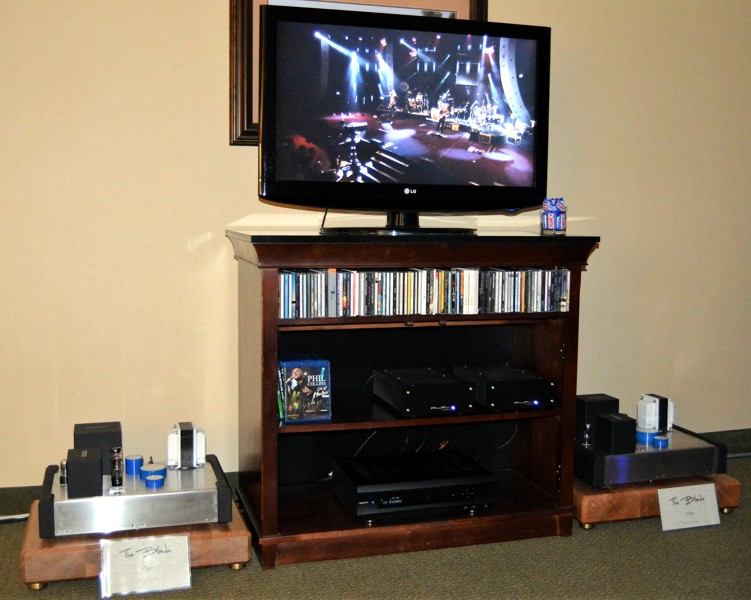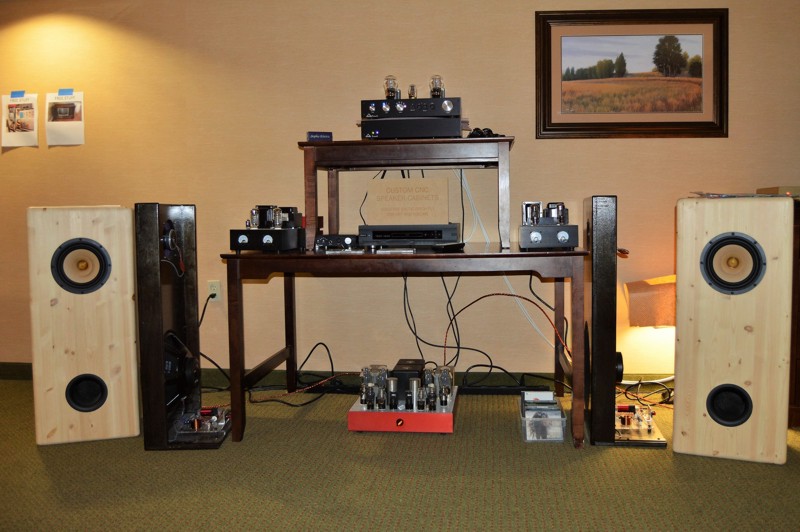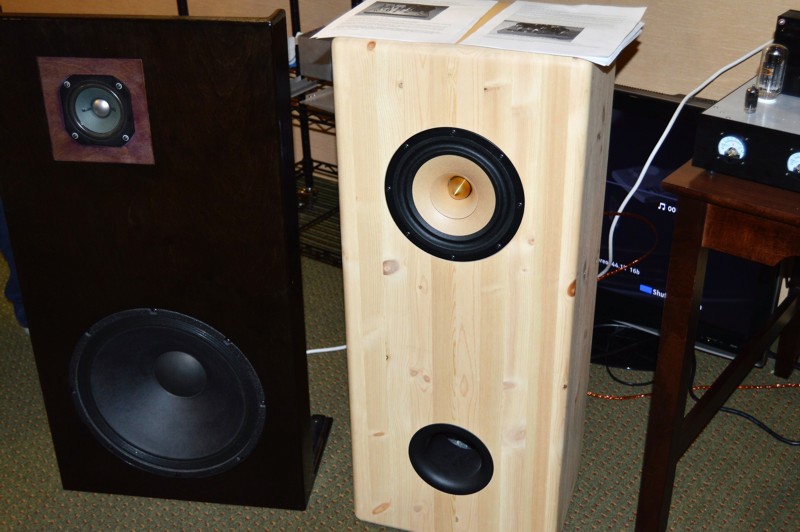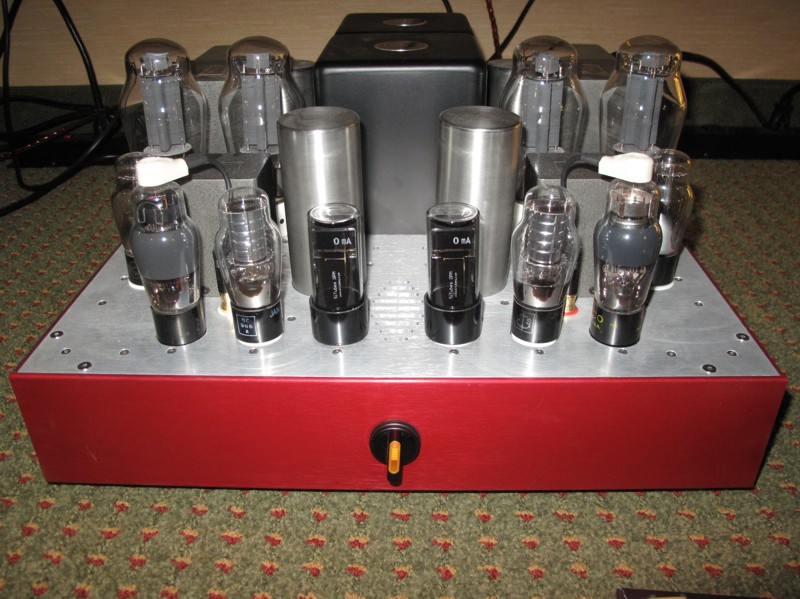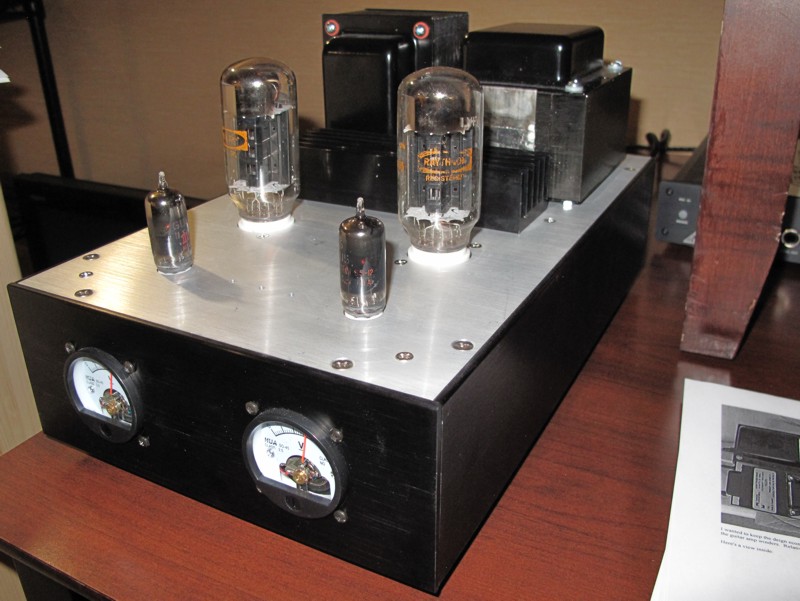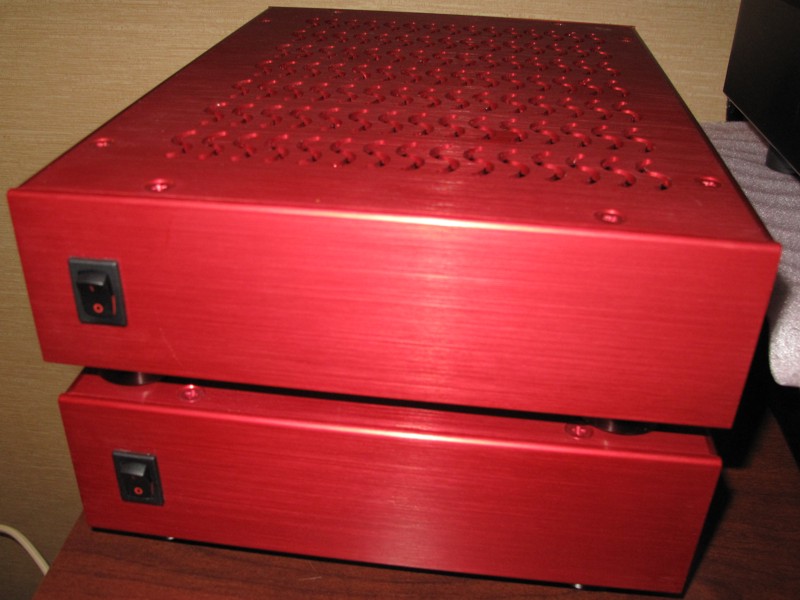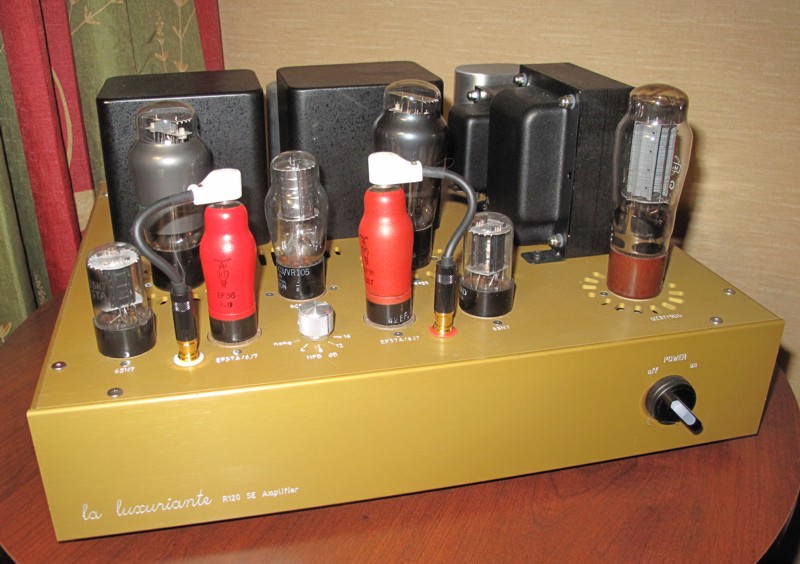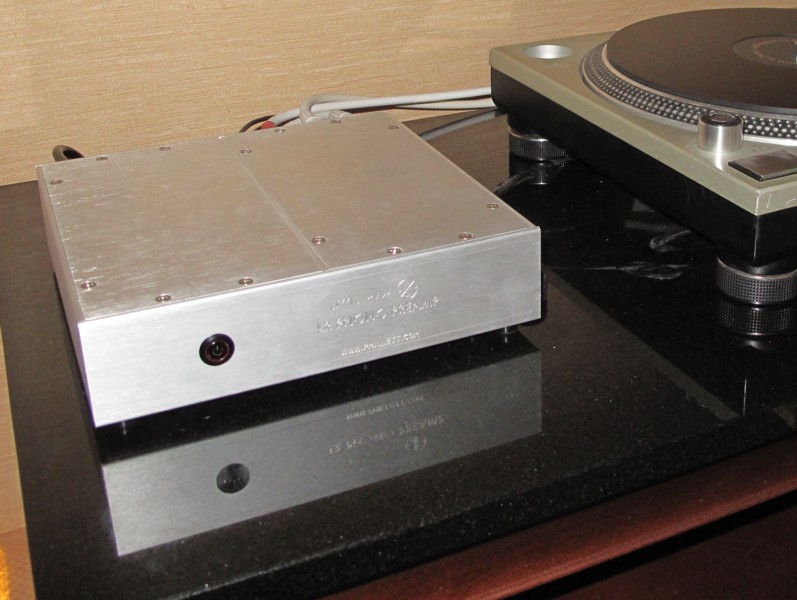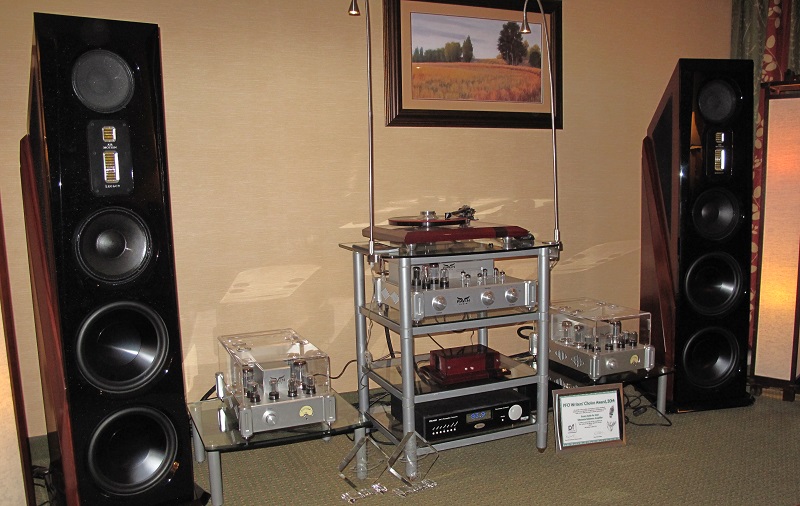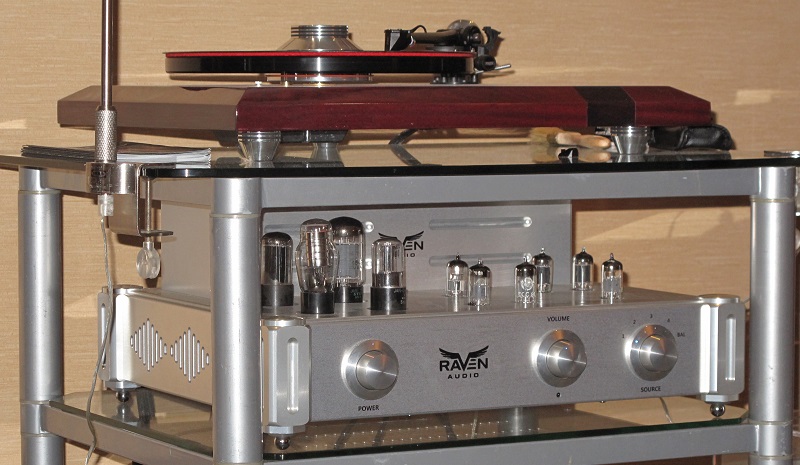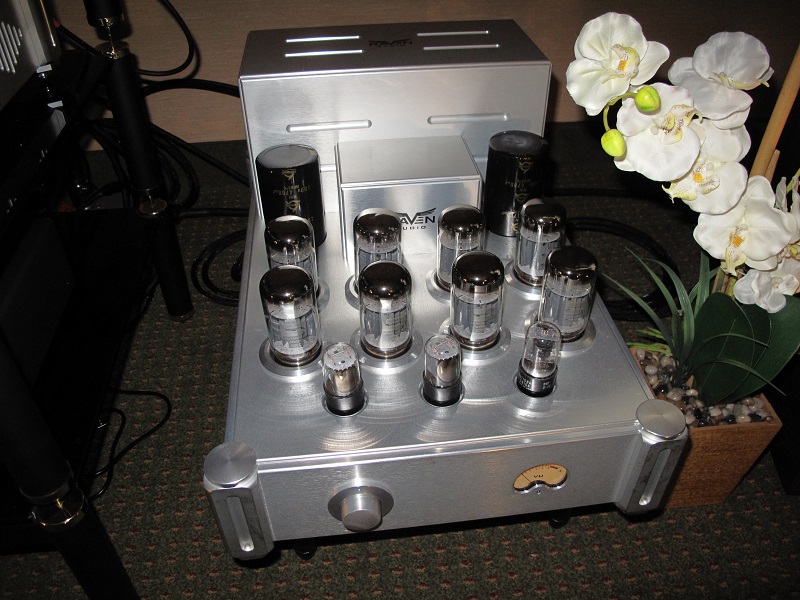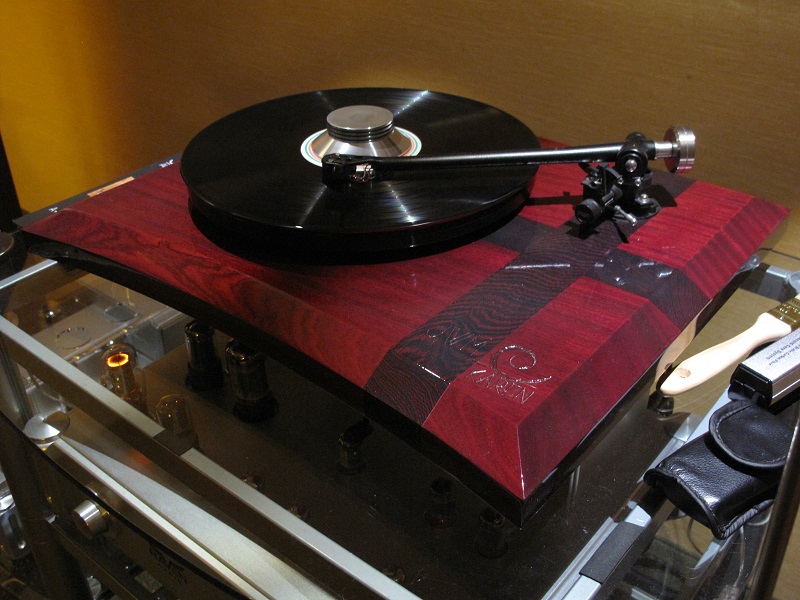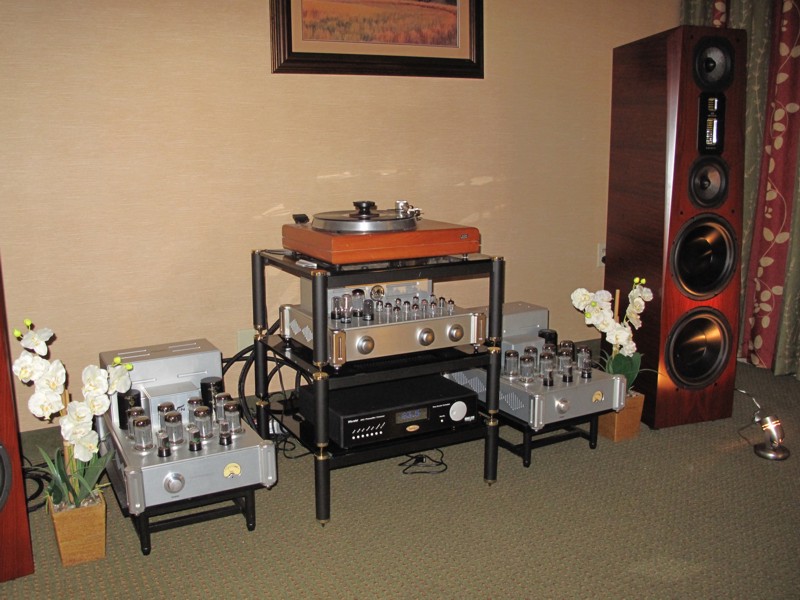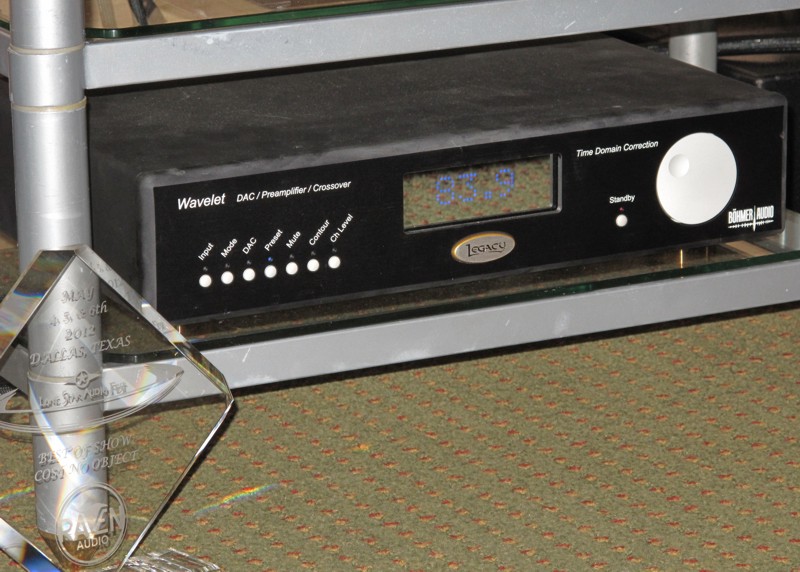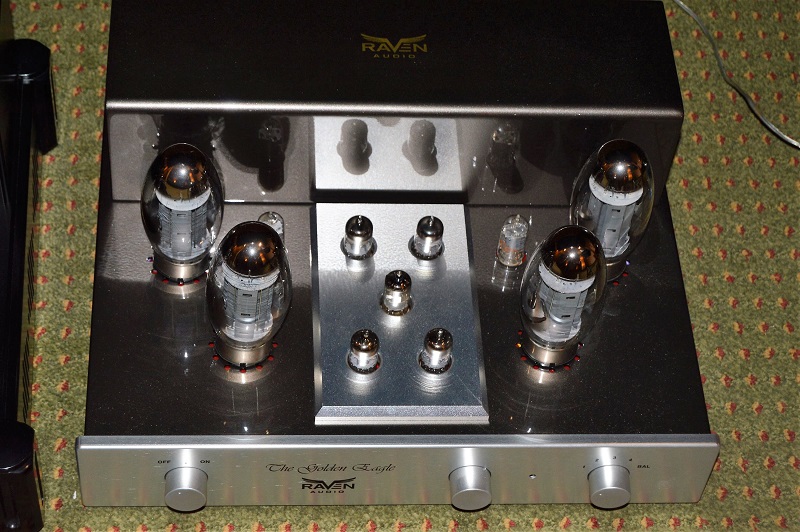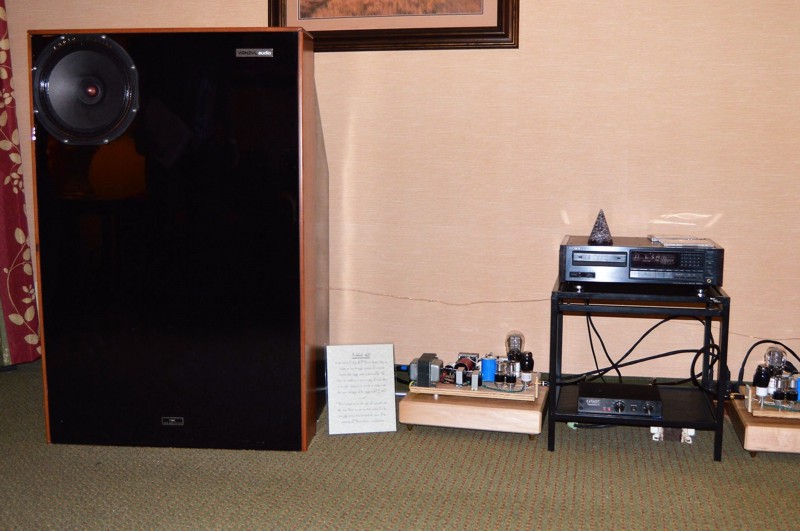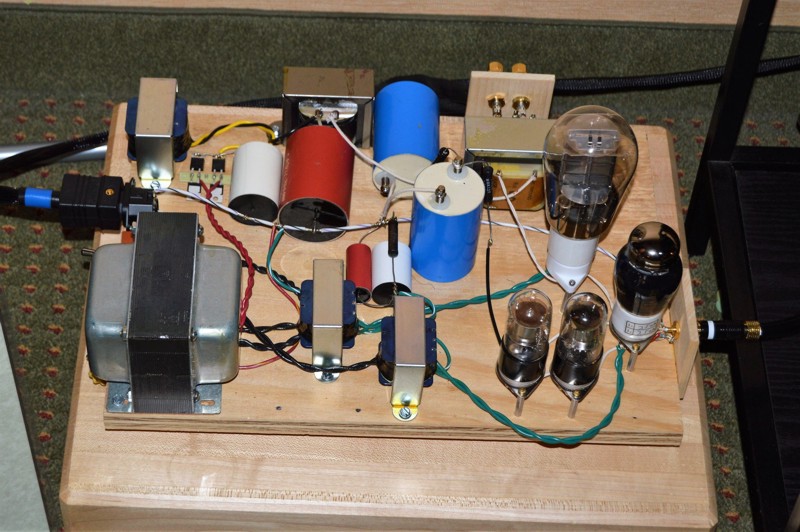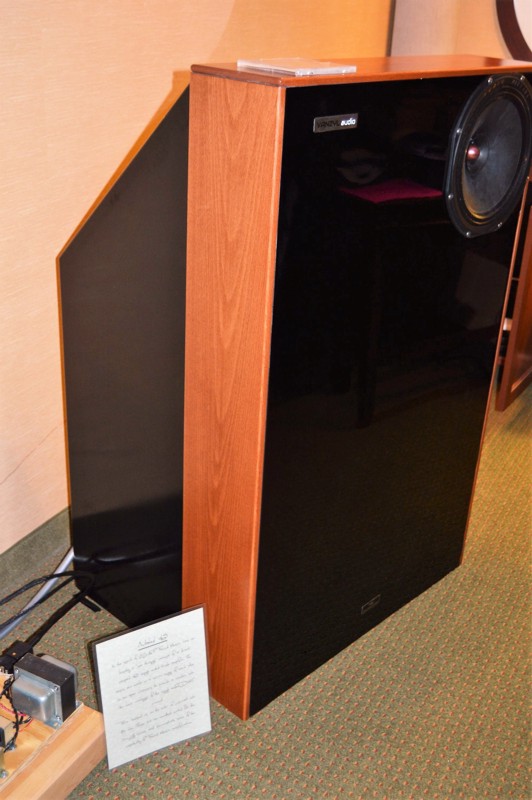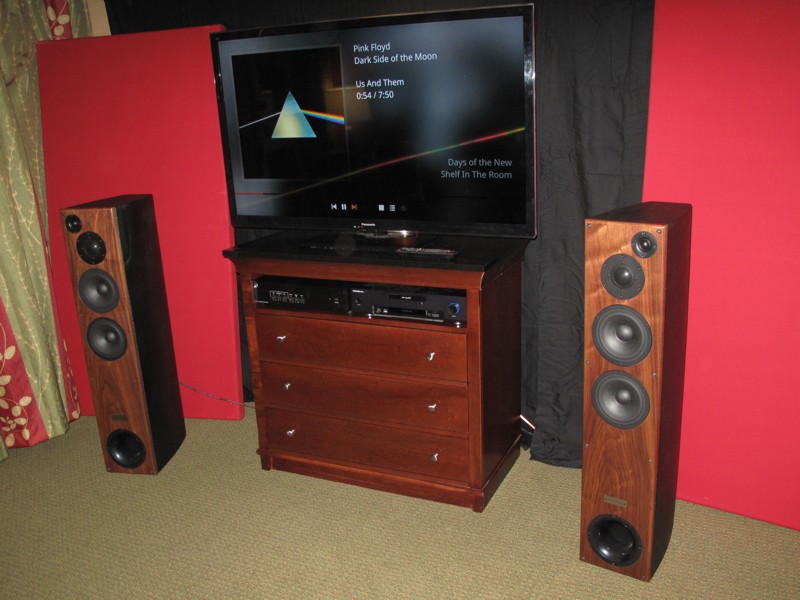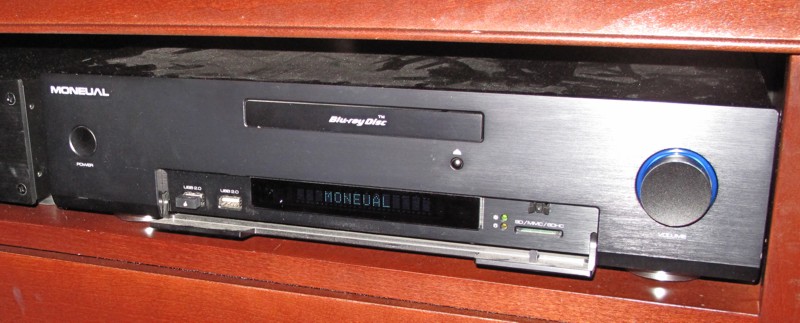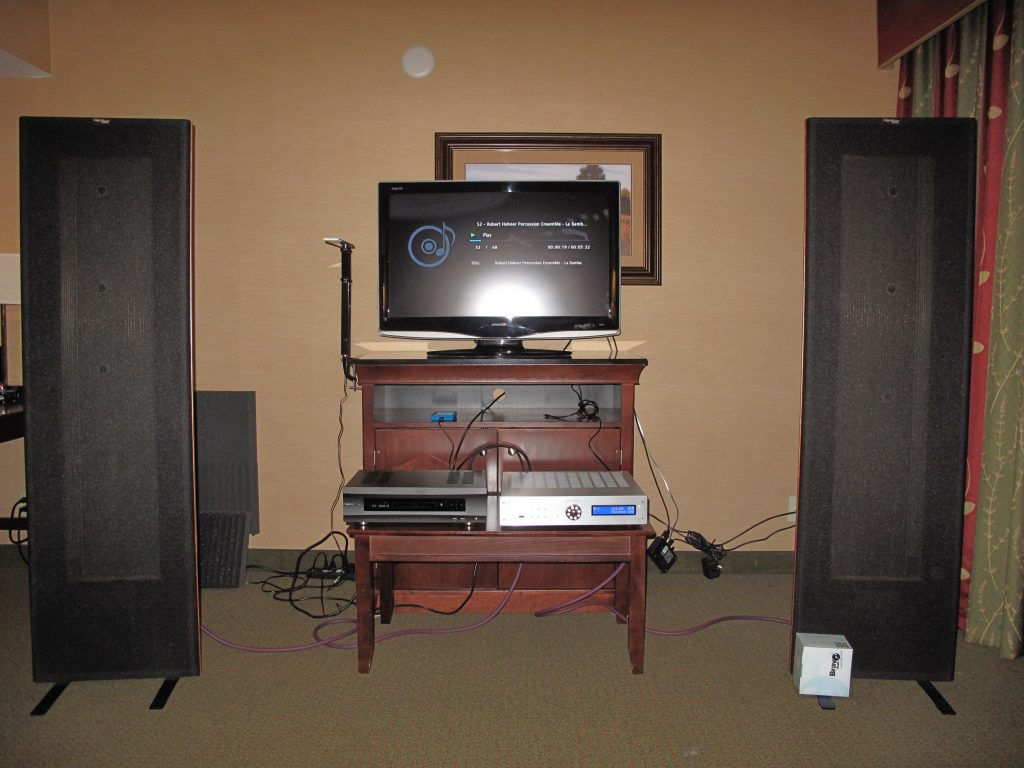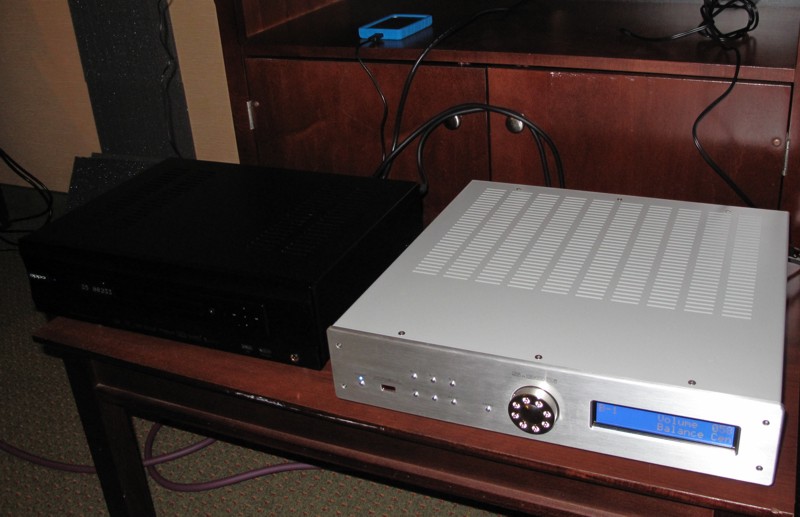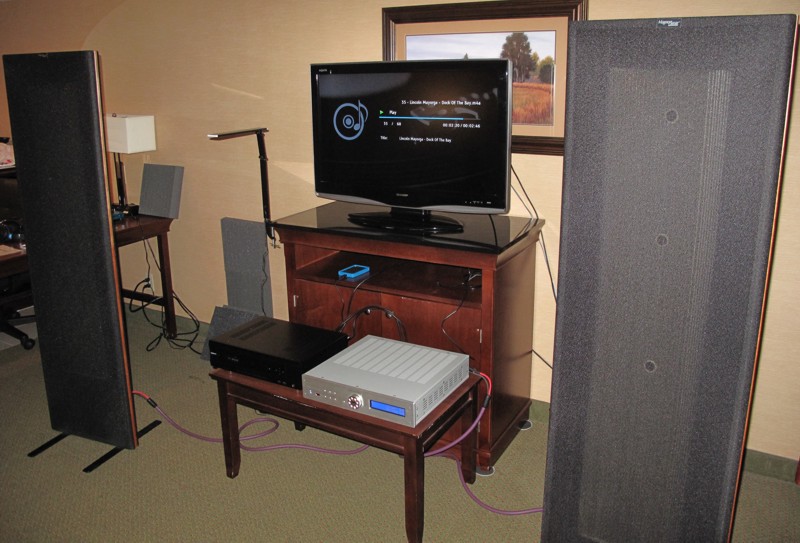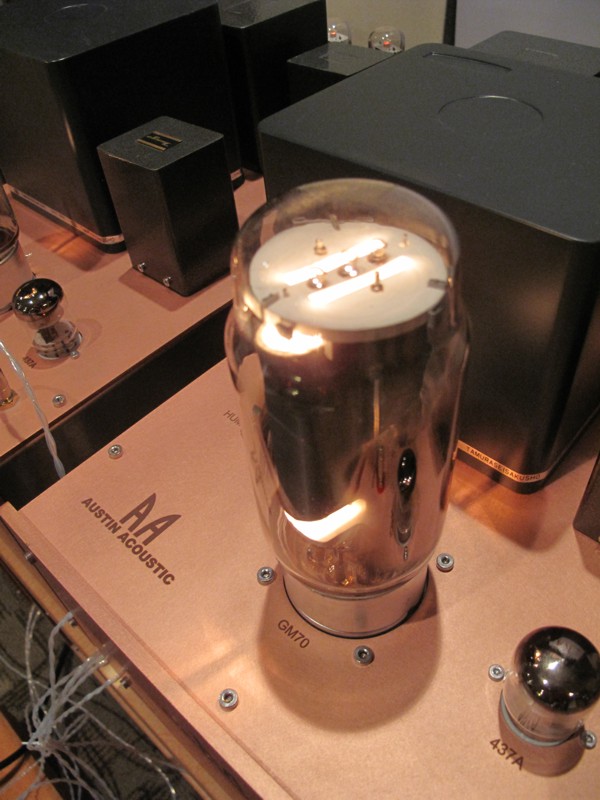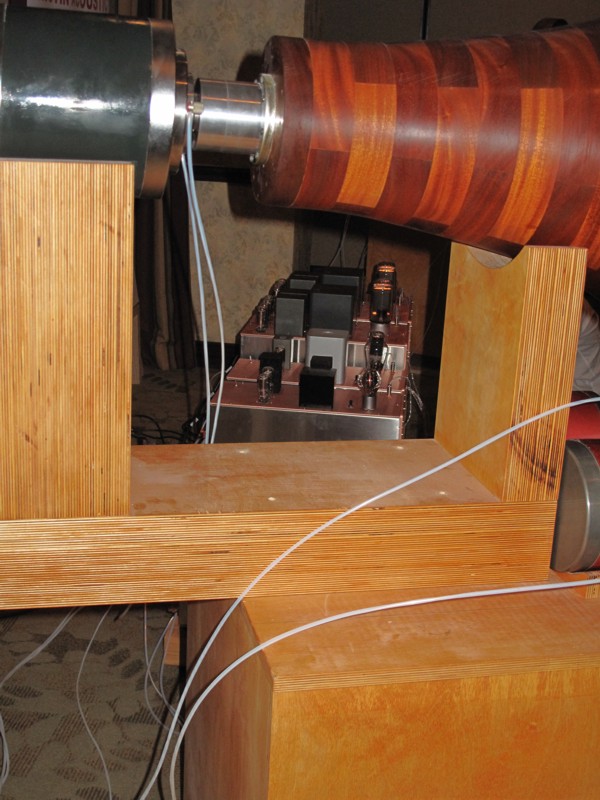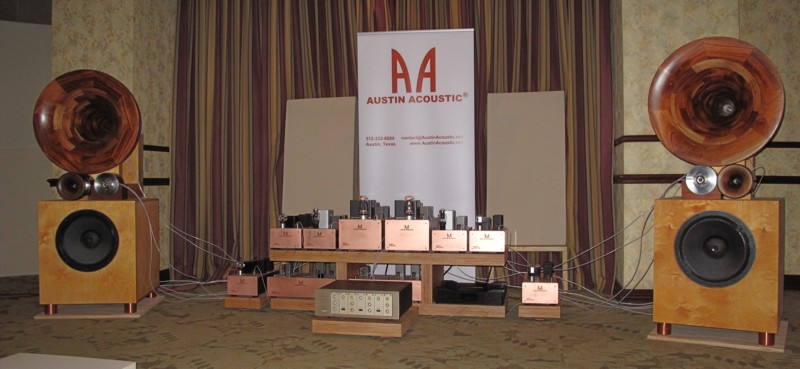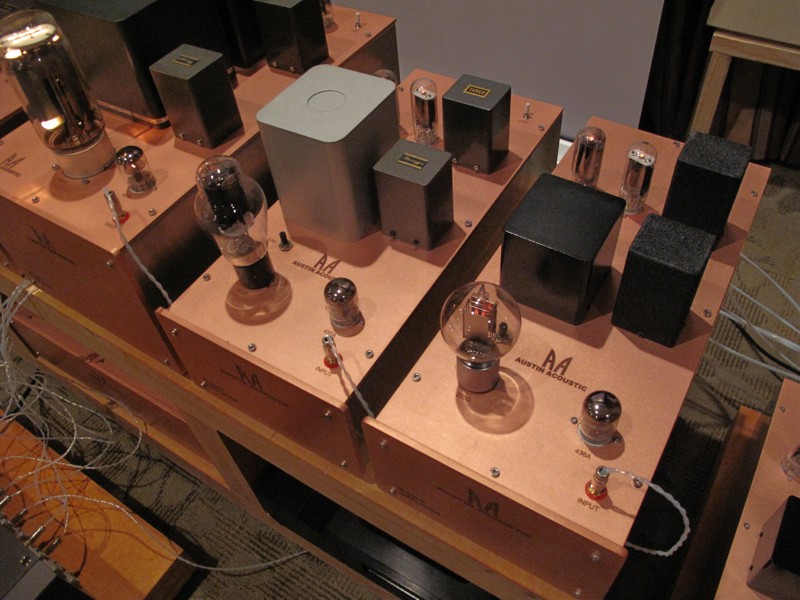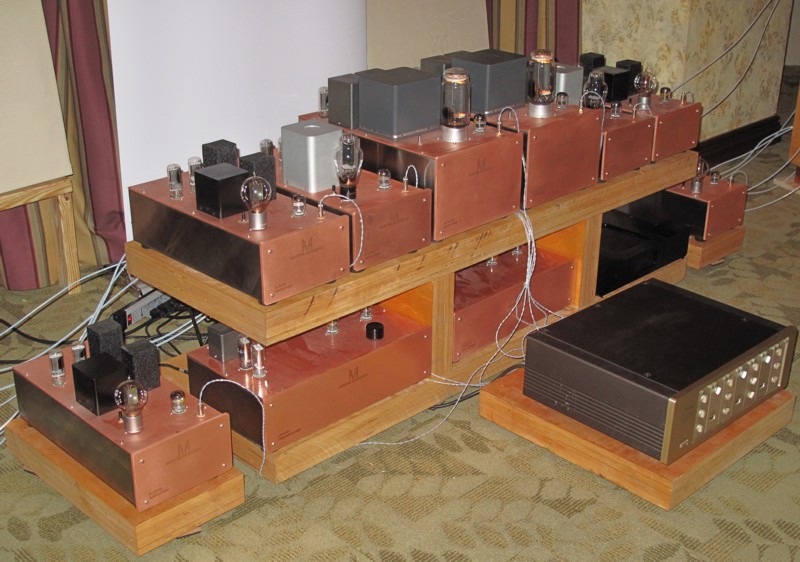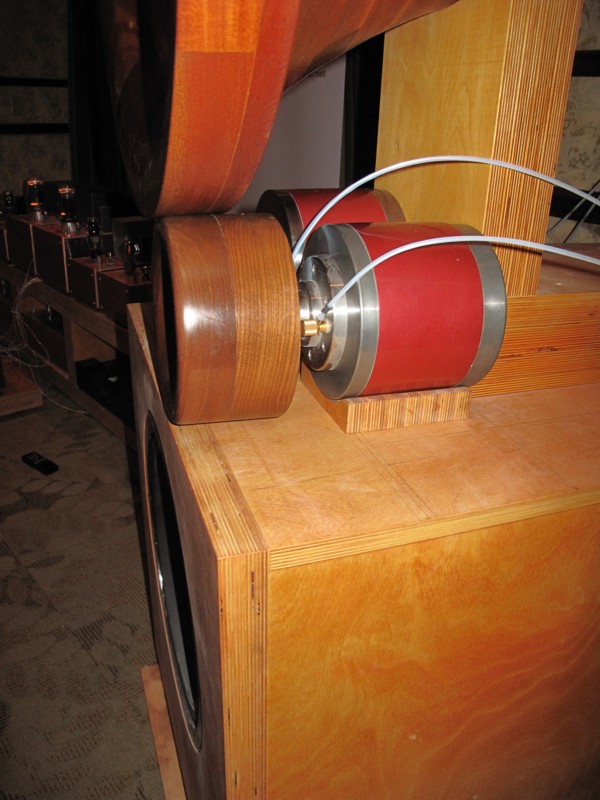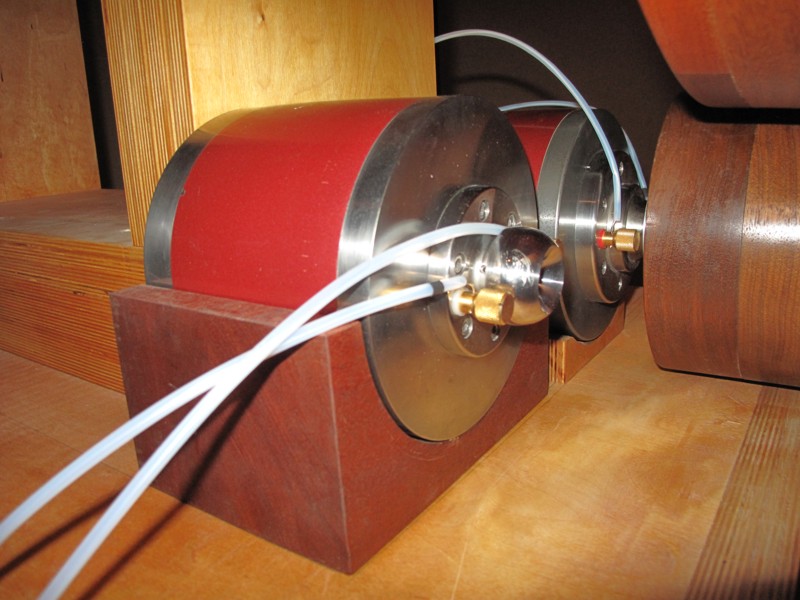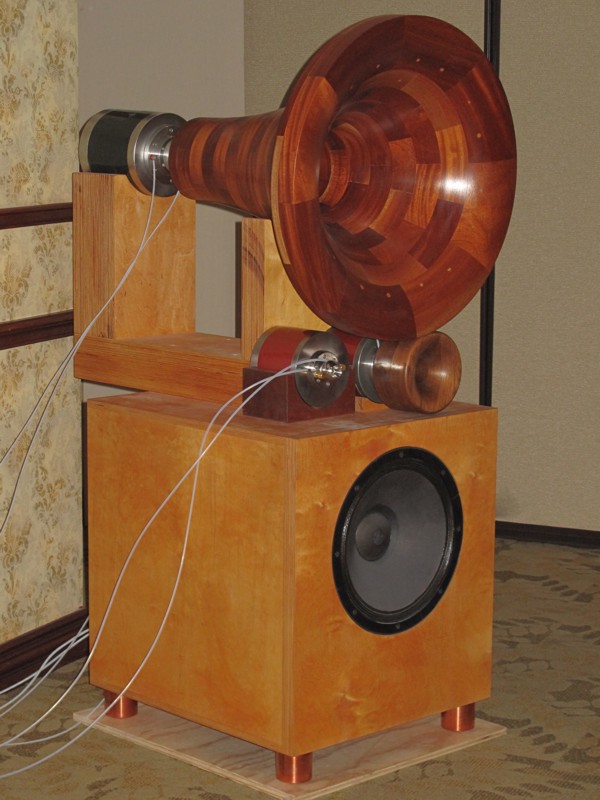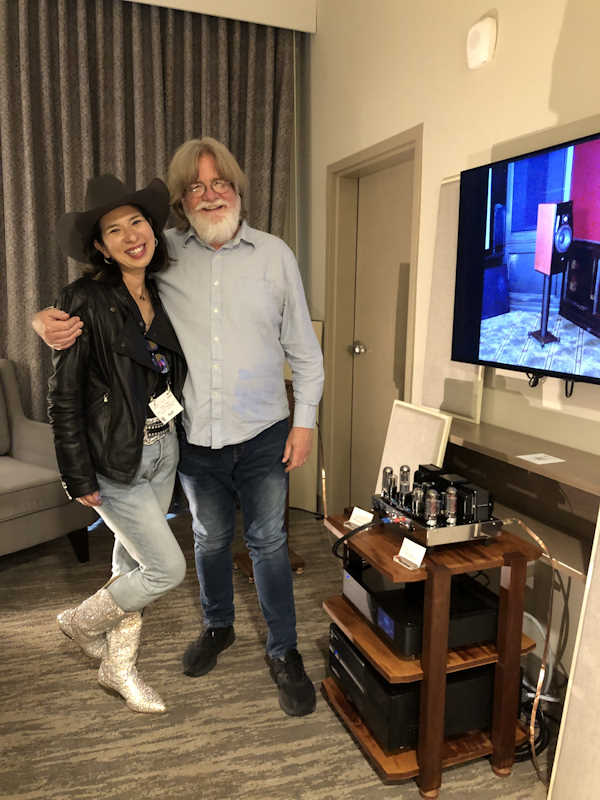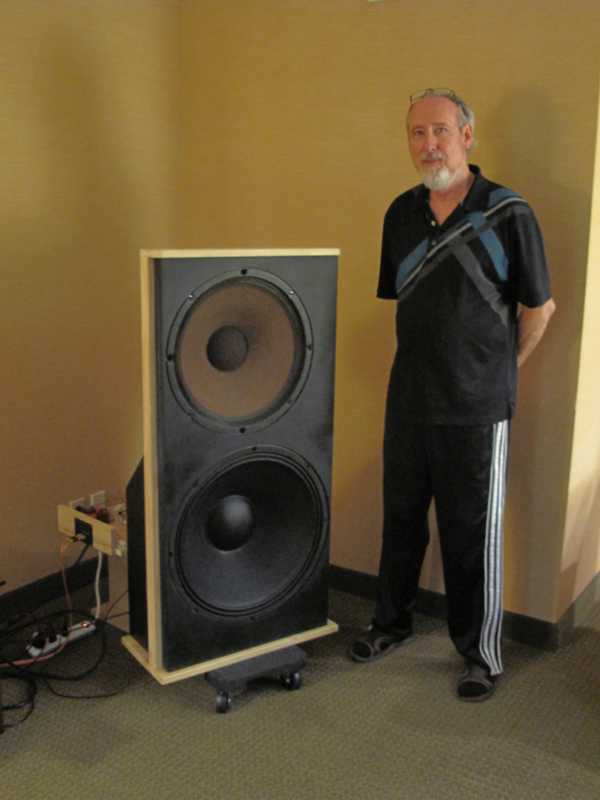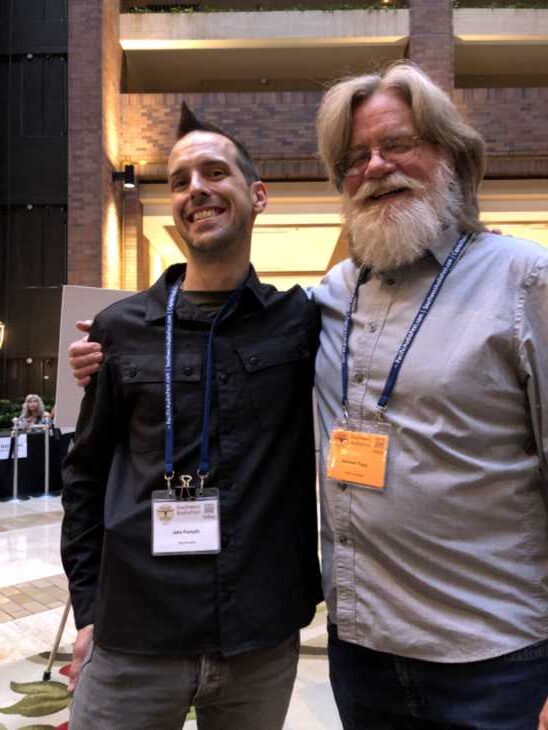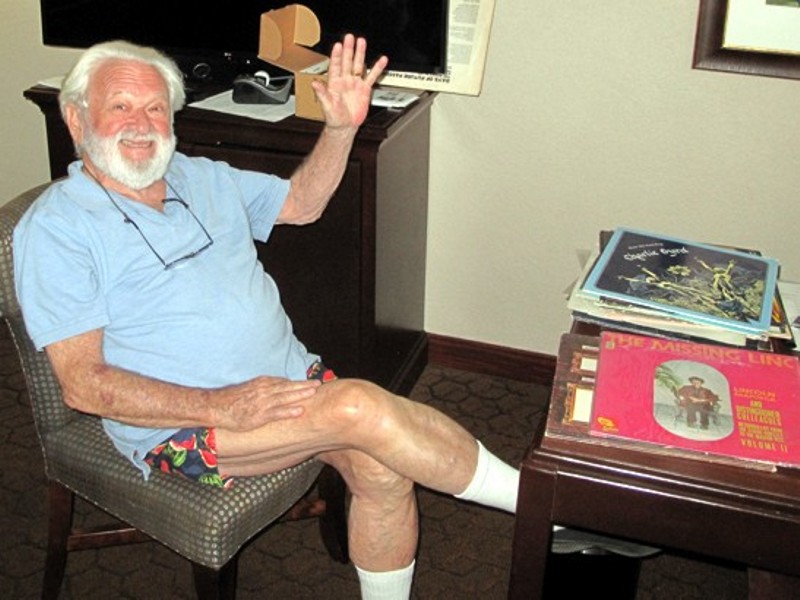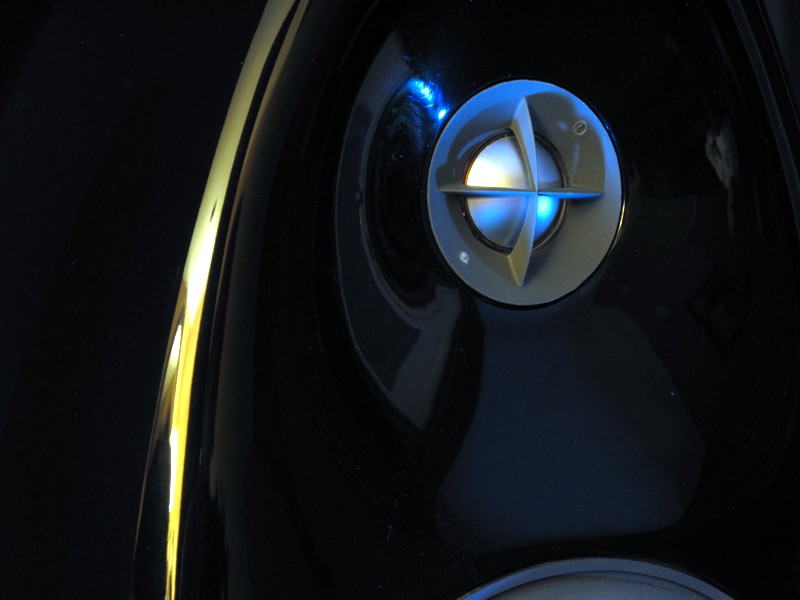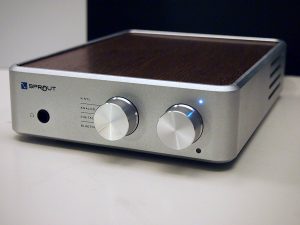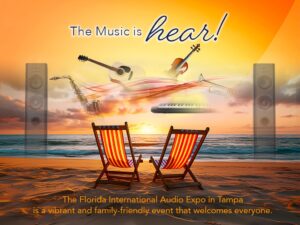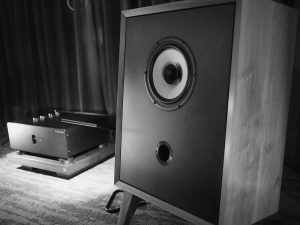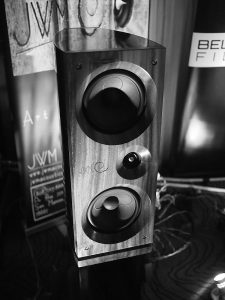Passion, that one word sums it all up and answers many questions. Why collectively spend decades evolving a simple table radio into a complex collection of boxes and wires? Passion, to advance the state-of-the-art in home music reproduction chasing an absolute ideal of fidelity. Why spend hundreds of hours designing a product line of HiFi components then haul hundreds even thousands of pounds of equipment and furniture into a hotel for demonstrations? Passion, to share the joy and peak emotional experiences available from fine HiFi music reproduction. Why attempt to make a living in the HiFi marketplace as it suffers disruption, worries of demographic decline, commodification, and replacement by smart phones and squeaking Bluetooth gizmos? Passion, to pursue a life connecting creators and makers with users and patrons thereby maintaining a craft art form that has brought HiFi music reproduction into millions of homes.
Every May a striking manifestation of those passions comes in the form of the Lone Star Audio Fest held in Dallas Texas. Passionate volunteers have staged this event annually for 13 years and 2017 found the mood upbeat and a nice uptick in attendance. It is highly ironic that the passions which fuel Lone Star Audio Fest are camouflaged by the warm southern hospitality of the exhibitors and attendees. This is well and good as we all know fine HiFi is best experienced in a relaxed atmosphere.
A door prize drawing for attendees was held with lucky winners taking away cables, speaker drivers, Dragonfly USB DACs, and a stunning pair of custom Pi Speakers' horns. All attendee's enjoyed improved access to the exhibit floors via hotel access cards. Also improved was the variety of equipment and systems on display spanning from high technology over achieving affordable to some of the most exotic imaginable. More background on LSAF can be found in my PF 2015 Show Report (HERE) and 2016 Show Report (HERE).
Before detailing individual exhibits a reminder that your author is also an exhibitor featuring my company Audio Crafters Guild. Comments on the sound of the systems are made to inform (and I hope entertain) the readers, no rankings are to be inferred. The realities of splitting my time between exhibiting my system and attempting to visit every other room makes deep analysis of sound impossible. Rooms that receive more detailed reports basically benefited from the luck of the draw on where I landed for extended listening after hours. And of course apologies to those I missed.
There is an interesting dynamic playing out in HiFi circa 2017. On the one side ever more costly, large, and complex statement systems that at times advance the state of the art while others times, miss that mark serving only as statements of consumption. These statement systems are aurally and visually impressive but frankly are only obtainable by the most dedicated and well-funded enthusiasts. The other side of the dynamic is HiFi systems that follow Henry David Thoreau's advice "life is frittered away by detail... simplify, simplify." Some of the simple systems are inwardly complex using advanced digital interfaces and processing along with non-traditional architectures. Others achieve simplicity using proven technologies and architectures cleverly packaged. In hindsight one of the treats of LSAF 2017 was the ability to audition then contrast and compare outstanding examples of both the delightfully complex and elegantly simple systems all under one roof.
Speakers by Mike
Michael Lundy proprietor of Speakers by Mike returned with his hand crafted speaker systems based on the technologies of Danny Richie's GR Research. Newly featured this year were GR's MB165NX woofers designed by Richie specifically for open baffle applications.
MB165NX woofers with copper plated phase plugs and pole pieces.
At LSAF 2017 we heard the MB165NXs in the demo system's dipole NX-Otica MTM monitors flanking wave guide equipped planar-magnetic tweeters. The NX-Otica monitor unit was supported by dipole servo woofers using GR's servo 12" subwoofer drivers driven by Rythmik Audio DirectServo amplification. Connected together by Richie's crossovers and Lundy's artisanal woodworking talents the parts united into a very musical, powerful, and refined high-end speaker system.
Fronting the system was Mike's music server, Oppo universial disk player, Geek Pulse DAC, Dodd pre-amp, and PrimaLuna ProLogue Four tube amplifier. With tubes powering the dipole monitors and servo powered subwoofers this system displayed the openness, low distortion and effortless dynamics that are the hallmark of both di-poles and bi-amplification. Relatively compact for a system with such high output and deep bass capabilities Mike and Danny's effort stood resplendent in its deeply polished lacquer finish.
As audiophiles we are drawn to complications, here I borrow the use of the word from the high end watch world, horology. There a complication refers to features in a mechanical timepiece beyond the simple display of hours and minutes. This came to mind listening to Michael Lundy's demo system featuring dipole operation with asymmetric baffles, multi-amping via tubes and servo control, ribbon tweeters and wave guides. Like a fine watch all those complications are brought together within a sleek industrial design executed in luxury materials. On the other hand if rather than complexity you appreciate elegant simplicity this team has some very fine conventional speaker designs. It was a pleasure to see the desktop system again in its exquisite veneer.
Believe High Fidelity
Believe High Fidelity is Joshua Masongsong's distributorship that treated LSAF attendees' to some very exotic European goodies from the likes of Aries Cerat and Echo Diastasis performing between JWM Acoustics source and speakers.
The 100% analog system equipment list starts with the Etsuro Urushi moving coil cartridge mounted on the JWM Acoustics Karen 6 turntable feeding the Echo-Diastasis Phono amplifier. The plan to use Aries Cerat Incito Preamplifier feeding Diana Forte amp had to be changed when the power amp arrived back from a reviewer damaged. Raven Audio to the rescue with a pair of Silhouette MK2 Monoblocks 125 watts per channel amps to drive the JWM Acoustics Alyson AML speakers. Vermouth Audio Cables were used throughout the system.
Believe High Fidelity's source and preamplification
Aries Cerat Diana Forte amplifier
Etsuro Urushi moving coil cartridge playing on JWM Acoustics Karen 6 turntable
Echo-Diastasis Phono Preamplifier
Aries Cerat Incito Preamplifier
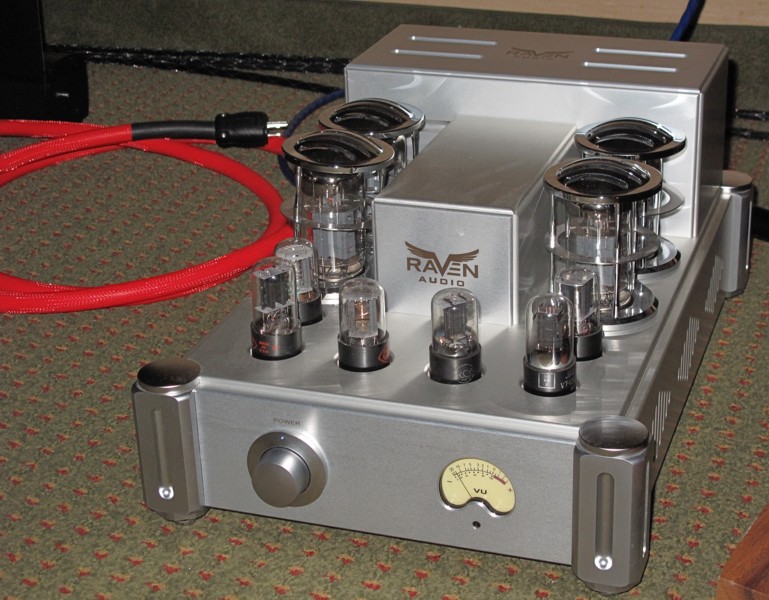
Raven Audio Silhouette MK2 Monoblock
JWM Acoustics Alyson AML
An interesting and educational opportunity provided by HiFi shows is the ability to contrast systems with certain components held constant allowing us to hear the differences brought by the component elements that differ. Believe High Fidelity's next door neighbor was JWM Acoustics; both rooms featuring JWM turntables and speakers. The superb highly refined sound in Masongsong's room testified to several points. First that it is no wonder we maintain analog sources in our systems, the Etsuro, JWM, Echo-Diastasis front end was sublime. Second that the massive and visually striking Aries Cerat Incito preamp is capable of passing and controlling an audio signal in a profoundly musically manner. Third, Raven Audio power amps, JWM Acoustics turntables and speakers perform at a level that effortlessly passes along additional musical information from upgrades elsewhere in the system. And finally that Joshua Masongsong excels at selecting both components to represent and music to play.
JWM Acoustics
Joshua Miles' JWM Acoustics returned to LSAF with top rank systems built around his stunning creations. Show goers were treated to alternately the Jane JKM tower or Allison AML large monitor speakers. The Allison featuring an elegant new white finish and the Jane JKM incorporated the culmination of two years of upgrades.
Once past the sonically and visually stunning speakers we find them driven by the Karen 12 turntable including Karen Control power supply. Completing the turntable system are Ortofon tonearm and Winfeld cartridge via BAT VK-P12SE Superpack phono stage. Sources fed Raven Audio's Silhouette MK2 Reference Preamp and Shaman MK2 325 watts per channel monoblock power amplifiers. The digital side covered via modified Oppo and laptop based music server. The cabling system was all Douglas Connection Alpha series including Alpha 10 Nano AuAg power cables for the Raven Monoblocks and Alpha 14 Nano AuAg power cables for the source and preamp. Speaker cables were Alpha 12, including the 3 sets of cables between Jane JKM tower and external crossover. Interconnect cables were Alpha Balanced, and Alpha 2.1 RCA cables
JWM Acoustics Karen 12 turntable and KAREN Control power supply
Alyson AML new white finish dialed back the miles deep polish seen on the black speakers offering an option for clients desiring a subtler look.
Raven Audio Shaman MK2
Jane JKM tower and external crossover
The Jane JKM is Mike's most ambitious speaker representing the culmination of a decade of R&D and design iterations. Full range 3-way in a sleek tower configuration the no holds barred design brief evidenced by the large external crossover enclosure. In addition to freeing size limits on the components and layout the crossover allows Joshua to tune the bass to the owner's room.
Auditioning Joshua Miles' gear is always a two-stage process for me. First the visual overwhelms the aural as I marvel at the effect of his craftsmanship and industrial design resulting in gallery worthy objects. Photographs can only hint at the depth, subtlety, light, and color a Joshua Miles' object presents to delight your eyes.
Once reacquainted and past the object's styling and finishes I focus on the music they make. And for the third year in a row it is confirmed Joshua's design chops are not limited to the visual. Both his speakers and turntables are easily in the top ranks of those practicing the high end HiFi arts. Artisans working at the pinnacle of their craft have a deep understanding of the materials with which they work. Speakers and turntables are all about vibrations some musical and needed others literally unwanted noise. Joshua knows how to take the wood and other materials he works in to manipulate those vibrations crafting musical works of art. If you are in the market for speakers or turntable a must audition.
Audio Crafters Guild
Your author's company Audio Crafters Guild was pleased to introduce at LSAF 2017 a preamplifier and power amplifier comprising ACG's 700 series electronics.
700 NTJ-FET ASP preamplifier and 700 Stereo power amp
The system is anchored by the 700 NTJ-FET Analog Signal Processor (ASP) preamplifier using NuTube 6P1+J-FET amplification. The NuTube 6P1 direct heated triode is the only audio triode designed in the 21st century, that fact alone compelled me to try it out. Combining 6P1 with low noise J-FETs and results exceeded expectations. The combination of triode lushness with J-FET transparency yields addictive tonally rich HiFi. The open architecture 700 NTJ-FET ASP is configured with Marchand XM9 electronic crossover modules feeding four channels of ACG power amplification.
6N1P triode and J-FET line amplifier
Power amplifiers included a pair of ACG's 1000 series mono blocks + energy banks and the new stereo 700 series amp. Both 700 and 1000 amps introduce new input buffers.
My strong preference for connecting amplifiers directly to the speaker drivers leads to a fondness of bi/tri/quad amped systems. For LSAF 2017 bi-amplification was featured in the ACG ΩZed mini-monitor system. This design uses SEAs woofer and tweeter in CNC cut laminated plywood enclosure with 3-D machined front baffle. With ΩZed's drivers connected directly to the amplifiers every nuance of the performance is revealed.
For a source JRiver media player software running on a custom media-PC feeds the Neutrality One DAC. Neutrality One is a rare custom design implementing a deep RAM buffer to decouple the digital data to be converted from the source's jitter. Designed by Erland Unruh only three were produced for the designer and friends. The equipment rack used is also a design by your author. It was fabricated along with other assemblies using the CNC mill and laser cutter of Tulsa's FabLab.
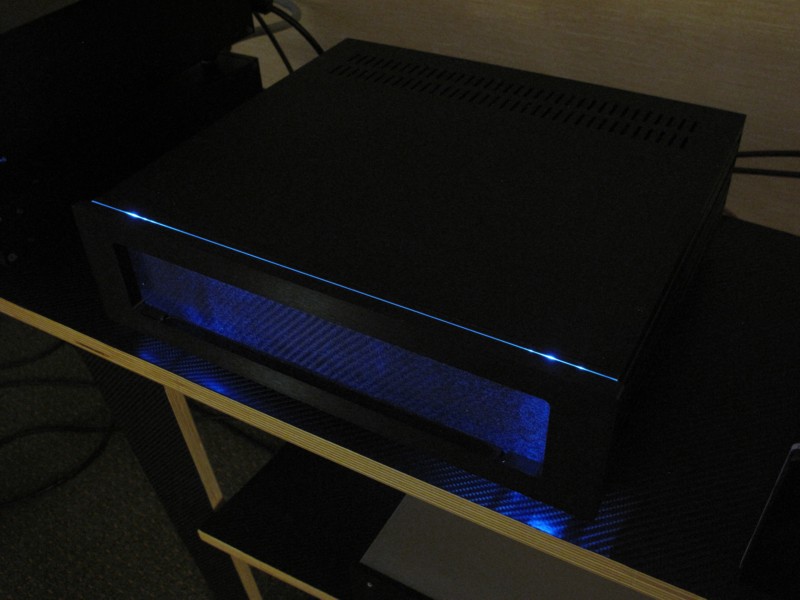
Audio Thesis
Derek Skipworth's Audio Thesis is both a dealership in Fort Worth Texas and a national distributor for select lines. He brought enough goodies to setup systems in two rooms. Jessica Hazewinkel the VP of sales for North Star Designs came over from Italy to help Skip introduce North Star Designs' product line.
Skip was very excited by the Rosso Fiorentino Fiesole 2-way plus super tweeter stand mount monitor anchoring his first system. I was to learn his excitement is well founded.
Rosso Fiorentino Fiesole
North Star Design's Supremo DAC and Magnifico CD Transport remained a constant while various amplifiers were cycled through listening for the perfect match. The Triode TRV-88SER was settled on to marvelous effect.
North Star Design digital source components
Triode TRV-88SER
Audio Thesis North Star, Triode, Rosso Fiorentino system
Joining Skip for a late night listen he DJ'ed showing how the Fiesole anchored system was basically able to do it all. Loud, deep, transparent, 3D imaging pull out your favorite audiophile adjectives and this system delivered. Then he played Elvis' "Jailhouse Rock". It is a cliché to claim a HiFi takes us back to the event while Elvis and his buddies rocked out. What I really think we are getting at claiming such time travel is describing those sought after moments when a piece of music we have known for decades becomes totally present in our consciousness and you are acutely aware of the music making by the artists involved. The beat remains but time slows as we become hyperaware. That song made me a believer that the Rosso Fiorentino Fiesole belongs on any short list of A-class monitors. The Fiesole's impeccable Italian styling, fit, and finish are a tasty bonus.
Lovely bit of serendipity, color matched amp from Japan and speakers from Italy.
In Audio Thesis' second room North Star Design Blue Diamond CD Player and DAC equipped Blue Diamond Integrated Amplifier drove Rosso Fiorentino Elba 2.5-way tower speakers. The highly refined music pouring out of this elegantly simple system calls into question just why do we need more complex systems? The North Star Design Blue Diamond electronics with Rosso Fiorentino Elba speakers is a great example of what can be had in four décor friendly boxes that leverage technology to deliver 90th percentile sound in an obtainable and presentable HiFi.
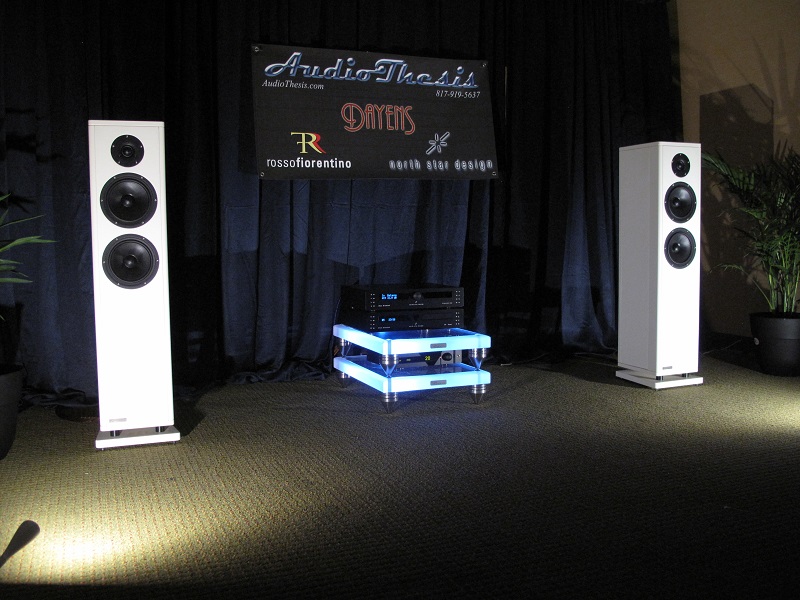
Rosso Fiorentino Elba
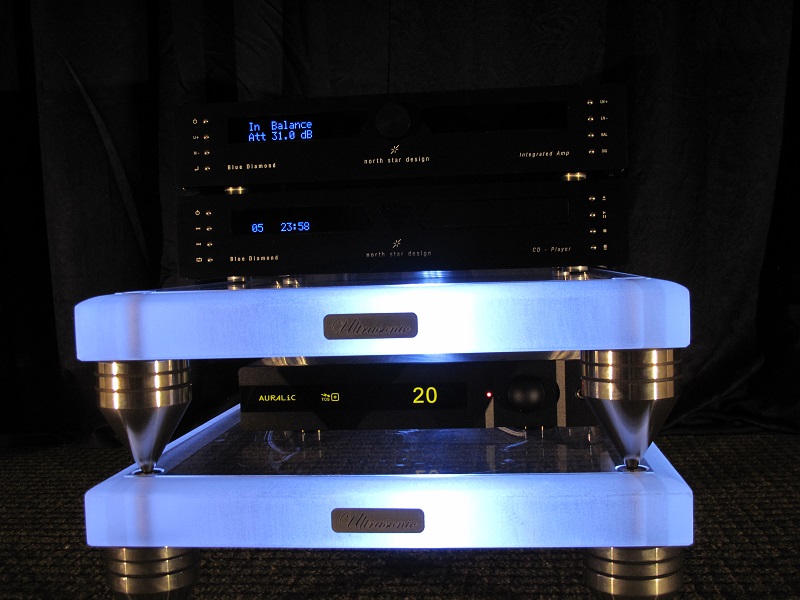
North Star Design Blue Diamond
HiFi shows provide the opportunity to talk with the individuals driving the companies producing the gear on display. At LSAF 2017 my discussions with Jessica Hazewinkel of North Star Design were very enlightening. My decades in HiFi as both a hobbyist consumer and professional designer manufacturer have led me to value customer service as a top criteria by which to judge a company. It does not matter if a component resets the state of the art in how it performs if you cannot get it serviced or have questions answered, or in 2017 drivers updated. Too often the customers who support the high end audio industry are left with expensive orphaned devices or discover the garage shop company who burst on the scene thanks to rave reviews is now overwhelmed by success. In discussions with Jessica it seemed no matter the topic we eventually circled back to what North Star Design does to support its customers. The core value that emerged is valuing and appreciating their customers regardless of if they are buying the latest top model or own one of the first products the company sold. Listening between the lines as she talked it was obvious this value was enabled by loyal repeat customers. Prior to the show I was vaguely aware of North Star Design, after hearing the gear and talking with Jessica Hazewinkel I came away a big fan.
Douglas Connection
Doug Ashworth is Douglas Connection based out of Austin one of several Texas based companies who are loyal LSAF exhibitors. As the name states Douglas Connection specializes in audio connection cables plus select components like the HRT DACs and accessories from Craig, Furutech, and VTI. Given Doug's close working relationship with Raven Audio it is no surprise that the room's demo system featured the Raven Audio Reflection MK2 Integrated 68-watts per channel amplifier powering Legacy Audio Calibre monitor sourced from HRT DAC. Cables for the demo system included Douglas Connection Alpha Balanced Interconnect cables from source to amp and Alpha Bi-Wire speaker cables. For the amp's power cable listening trials compared the new Alpha 10 NANO AuAg, Alpha 10 Reference, and for this system finally settling on the Alpha 11.
A well-known school of thought states it is better to own a select few really exquisite things as opposed to more nice or average things, more succinctly quality over quantity. Doug's demo system certainly made that case. With the laptop and HRT DAC out of sight the amp and speakers take center stage. Exquisite is the correct adjective to describe the sound, industrial design, fit and finish of both the Raven Audio Reflection Mk II, Legacy Audio Calibre.
Legacy Audio Calibre
Raven Audio Reflection MkII
The same adjective exquisite also describes the sound of the system. The Reflection MkII is part of Raven Audio's top Elite series benefitting from both the larger component parts budget and fully machined casework. In a world full of 2-way monitors with 5" woofers Legacy Audio's Calibre monitor's 3-way plus dual passive radiator configuration represents fresh thinking. With a dedicated woofer and dual passive radiators the Calibre requires none of the typical caveats marched out for compact monitor bass. The dedicated midrange driver brings the sonic goods benefiting from being relieved of bass duty. The Dr. Heil AMT style folded ribbon serves up state of the art highs. It was a real treat to hear this recently introduced speaker perform at such a high level made possible by the Reflection MkII and Douglas Connection Alpha cables.
Advanced Home Theater Systems
As audiophiles one of our definitions of Big Fun is getting to hear the hot new product generating press buzz thanks to its advanced technology. Scott Warren of Advanced Home Theater Systems based in Plano Texas more than obliged showing up with the Kii Audio THREE speaker system and matching Kii CONTROL (I feel compelled to note the ALLCAPS in the model names are a Kii Audio convention). With the pair of compact THREE monitors and CONTROL input selector and volume control plus your digital or analog source making up the entire stereo system these certainly fall on the simplify side. Physically simple, inside the THREE systems goes complex and high technology.
Each speaker has digital signal processing implementing the crossovers feeding six drivers (tweeter, midrange, and four woofers). With 6 x 250 watts of Ncore amplification allowing implementation of closed loop control of the drivers and what Kii calls Active Wave Focusing to create a forward directed sound launch in an attempt to minimize room effects on the sound.
With all that technology brought to bear on the task of playing some songs I listened intently and critically making the following notes. The bass is very clean and tight, the hotel suite sounds like a larger acoustically treated space. The system sounded like much larger speakers owing to the depth and power of its bass. Very transparent, with flat response yielding great accuracy to the source. A strong mid-bass and deep bass yield a warmth and body that prevents it from sounding sterile or overly technical. Good to very good pace, rhythm, and timing. The bass can get nice and loud without becoming overbearing, booming, or thick. Speakers and control features excellent industrial design, styling, and product manufacturing execution.
Kii Audio's THREE and CONTROL delivered on the large promises its designers make. It will be interesting to see if the HiFi marketplace rewards that technical success when it lead to several non-traditional system architectures.
Manzanita Audio Solutions
John Bush owner and chief designer at Manzanita Audio Solutions is a very talented speaker designer. Bush's portfolio includes some conventional box speakers but he is best known for his expertise in open baffle types.
For LSAF 2017 John introduced a new design the prototype hot off the table saw. This latest design reduced the wide baffle footprint of his larger dipoles by folding the baffle into an open backed box and trimming the woofer frame to narrow it down.
Bush's crossover design talent expertly blended the large woofer to the European wide range driver covering the midrange and highs.
As is typical of Manzanita Audio Solutions' designs the music played with a lot of life big and dynamic. The wide range driver seemed very well behaved delivering the directness and coherence we love from the breed without any of the edge or roughness other similar drivers exhibit. Such a big warm fun sound on just a few watts of tube power shows once again tubes love big woofers and John Bush knows how to implement the big, and in this case not so big, dipole.
Brines Acoustics
The report on Bob Brines' Brines Acoustics room may read like an article about some tech startup from Silicon Valley, no make that Austin's tech corridor; this story does come from Texas. That is because I will be using the word so favored by tech writers, disruptive. Bob Brines recent work is disruptive of the HiFi orthodoxy. Well, it would be were audiophiles not so accomplished ignoring new tech in favor of established norms. Nevertheless taken as a system to be duplicated or an example of where digital technology can take us Bob's system is one to hear.
Brines' disruption is the level of performance he achieves out of electronics costing only $500. And that $500 includes the PC acting as a music server.
Azulle Quantum computer, miniDSP 2x4 HD crossover, SMSA 98e amps
The Brines' designed speakers add ~$3000 depending on finishing options. The resulting circa $3500 system sets a sound quality benchmark that would worry many systems with prices well into five figures. The recipe for disruption is a wide range mid-tweeter plus woofer both of pedigreed Scandinavian origin housed in a generously sized Mass Loaded Transmission Line enclosure, MiniDSP based crossover, and bi-amplification via SMSL class-D.
Also very 2017 disruptive is the use of freeware programs Foobar2000 and REW (Room EQ Wizzard) for music playback and crossover filter design. As a final nod to the ways of 2017 all the electronics are housed in enclosures you can carry in the palm of one hand.
So what does disruption sound like? Like a very sophisticated, tone neutral, wide bandwidth, low distortion high-end stereo. On Fleetwood Mac's Rumors I noted the reproduction of the mandolin as 'so clean' as was some Nora Jones jazz. The bass torture test Bell Fleck's Flight of the Cosmic Hippos played deep and clean thanks to the quality driver and its loading. Such very clever uses of resources yielding a sum quite a bit greater that its constituent parts.
The Dodd Audio Room
Scott Clark presented The Dodd Room honoring the work of the late Gary Dodd. There is a community around LSAF and vacuum tube electronics designer Gary Dodd was a highly regarded and sorely missed member. Gary is known for his innovative circuits combining tubes with battery power and lovely case work featuring exquisitely finished exotic wood faceplates. It is just and fitting the X-Statik speakers from Danny Richie's GR Research was used to show off Dodd's electronics. When heart disease attacked Gary Dodd it was Danny Richie who repeatedly came to Dodd's aid supporting his friend to the end.
Scott also brought a tasty selection of used LPs from Records Guys for those of us whose collections are never completed.
BlowTorch Audio
Russ Gates' BlowTorch Audio demonstrated both his tower and stand mount speaker designs.
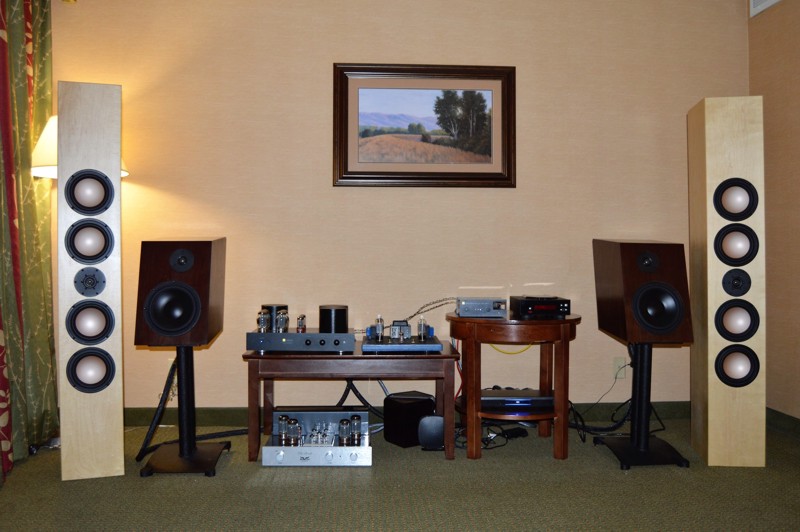
As usual using tube amplification showing how well his speakers work with tube watts.
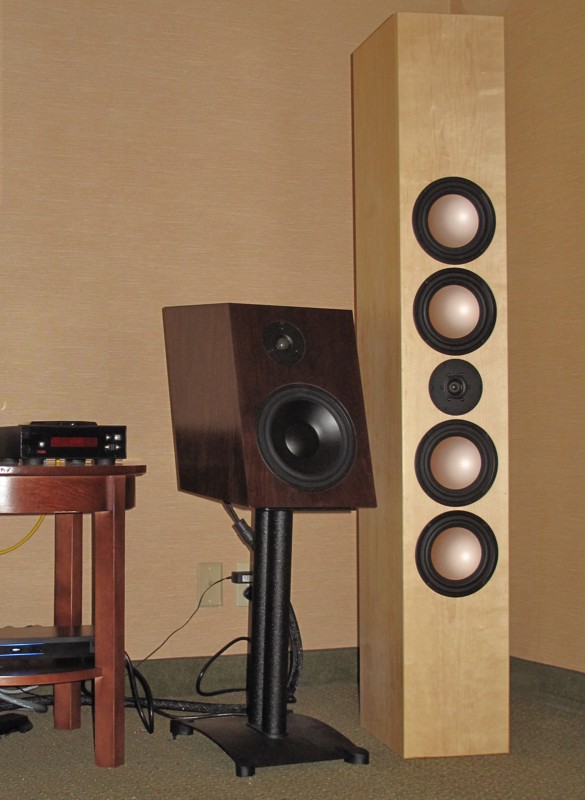
Russ' designs combine the full bass and dynamics of classic '70s speakers with the refinement and transparency of 21st century designs.
Pi Speakers
Wayne Parham's Pi Speakers demo system includes several subtle design features so let's go into some of the details as provided by Wayne. Note that in contrast to Kii's all uppercase model names Pi uses all lowercase to spell out the various speaker model numbers.
The main speakers are seven Pi constant directivity corner horns using DE250 compression drivers mounted on an H390C waveguide made of birds eye maple, a Delta 10 driver in the midrange horn and a JBL 2226H driver in the bass bin.
Constant directivity cornerhorns are unique in that they are designed to be placed in the corner and take advantage of the close proximity to boundaries eliminating near reflections. Since the source is acoustically close to the corner, there are no early reflections.
Additionally, each subsystem has 90 degree constant directivity, so the radiation pattern through the entire audio band has uniform directivity. Room coverage is exceptionally smooth and free of early reflections. Wayne asserts no other configuration that can achieve this.
Subwoofers are three Pi in opposite corners, a standard Welti multisub configuration. The low-pass frequency was set to 50Hz, so it smoothed the 40Hz node so many suffer from in LSAF's hotel.
Scott Shaeffer's Found Music Blade mono tube amps powered the main speakers, subs were driven with a pair of 60W FET monoblocks. The Found Music Blade amplifiers are a mono class-A distributed load push pull design that use extreme measures in construction and parts quality. The Blade is wired in ultra-pure Cu or Ag, the copper version featured at LSAF. Chassis is heavily gusseted 11ga stainless steel for vibration control. Tube compliment is 6SN7 and KT77, power output is 28-watts with headroom to 60w peak.
As typical for Pi Speakers the source is an Oppo universal player with live concert BDs and DVDs in heavy rotation.
All this added up to the smooth, sweet, open, effortless, full, dynamic sound that is a given with Pi Speakers designs. The high priority given to constant directivity in Parham's designs seems to translate into such a smooth and even reproduction that music is brought to the fore while the HiFi remains an invisible force. Step into their room and it's a party and everyone is enjoying the music and talking about the music. Granted some of this vibe is the smiling hostess and host Kelly and Wayne Parham. I also believe the way a Parham system so evenly covers the entire room with such wide range low distortion smooth sound greatly contributes. It's as if when the sound doesn't change as you move and the system is committing only the smallest reproduction sins you stop analyzing the sound and just enjoy the music. Found Music's Blade amps and Pi Speakers' seven Pi horns made for such a refined pairing listeners were not distracted by reproduction artifacts but instead drawn into the music.
Pete Millet and Landfall Systems
David Flores, Saer Ford, and Pete Millet of Landfall Systems and Pete Millett's DIY Audio pages treated us to another room full of goodies. With Landfall Systems excellent CNC anodized cases housing Millett's advanced tube and solid state designs enter their room find yourselves in an audiophile's candy store.
Speaker options included Pioneer Green Cone + Eminence dipole or Tang Band full range.
On the subject of speakers news at LSAF is that Landfall Systems is offering CNC cutting of wood materials for speaker enclosures in addition to their existing metal CNC capabilities.
New this year is Millett's 50 watt monoblock version of his "Engineer's Amplifier". The design is fully documented on (http://pmillett.com/DCPP_MB.html).
Engineer's Amplifier mono block 50 watt PP
As the North American distributor of Korg's Nutube one of the applications Pete Millet has developed is this hybrid triode plus class D amplifier. The enclosure fit, finish, and 'S' cut vent holes certainly demonstrate Landfall Systems' capabilities.
Always a treat to see which exotic triode Millet has designed for, this year it's the R120. I am such a sucker for anode caps.
Apex is one of the companies Millet designs for, 6SN7 inputs to PX4 triode output tubes.
Apex Pinnacle vacuum tube preamplifier and headphone amp
The LR Phono preamplifier is one of the Pete Millet designs I really want in my system. This Landfall Systems case features a shield divider separating the power supply from the phono preamplifier.
Raven Audio
The constantly smiling Dave Thomson hosted two Raven Audio rooms. The partnerships with Legacy Audio speakers and Douglas Connections cables continue to deliver absolute top shelf music reproduction. Dave had good news on both the technical and business sides to share at LSAF 2017.
News on the technical side begins with both demo rooms implemented Legacy Audio's new Wavelet room correction system. The Wavelet DSP also acting as the systems' DAC. Both demo systems were built around a core of Raven Audio Elite Series tube components. The first room featured Silhouette MK2 Reference Preamplifier, Silhouette MK2 Monoblock power amplifiers at 125-watts per channel, Legacy Audio Aeris speakers with JWM Acoustics Karen 12 turntable.
Karen 12 into Silhouette MK2 Reference Preamplifier
Raven Audio Silhouette MK2
JWM Acoustics Karen 12
The second Raven Audio room featured Shaman MK2 Monoblocks capable of 325-watts per channel driving Legacy Audio Focus SE speakers. As the analog source for the second room Dave featured a friend's pristine vintage AR turntable into another Silhouette MK2 Reference Preamplifier. The Wavelet again providing room correction and DAC functions.
Cabling for both Raven Audio systems was the Douglas Connection Alpha 11 Power Cables, Alpha 12 Speaker Cables, with Alpha Balanced and Alpha RCA Interconnect cables.
Legacy Audio Wavelet
In the Wavelet system after measurements are made of the speaker plus room response the result is uploaded to Bohmer Audio's supercomputer in Europe for intense number crunching. This yields a response correction that operates in both the frequency and time domains. The audible result is simultaneously subtle and impressive. That sounds oxymoronic so let me explain. One of the challenges of presenting high-end HiFi in hotel rooms is they are constructed of steel reinforced cement in contrast to our homes' wooden construction. On the plus side such a stiff room holds in the sound and we get impressive dynamics, transparency, and 'slam'. Add that to a top of the line system and the first few songs auditioned are marvelous. The down side of a stiff room is when you encounter the room modes related to the room's dimensions they go off like a firecracker. Clap your hands in such a room and the clap is followed by a ringing sound as the energy bounces back and forth. The first order effect in this hotel is the suites have a wicked peak in the 40 to 60Hz range, once excited that peak rings like a bell smearing the music. It all nets out that over the last two years Raven Audio has exhibited with these very powerful and wideband Legacy speakers with excellent results. This year adding the Wavelet processing and that powerful bass played with a new level of clarity and transparency, the typical result when we chase resonances out of our systems. A neophyte may miss the effect but experienced listeners hear that a layer of grunge riding on the music from the room's ringing has disappeared. Of course our home listening rooms have their own unique acoustic issues, given our familiarity with our home base sound I expect the Wavelet's affect would be far from subtle.
Raven Audio's good news on the business side is their efforts have gained the traction to transition from a startup to a larger established business. The popular Avian Series Nighthawk and Blackhawk integrated amps are being joined by the new Golden Eagle adding more power and refinement. Behind the scenes operations have moved to an expanded facility including both manufacturing and listening demo facilities. Demand for Raven Audio products have grown to the extent that both their established manufacturing partners and new internal production capabilities are needed to keep up. Congratulations to Dave Thomson and his team at reaching such a critical milestone.
Raven Audio Golden Eagle
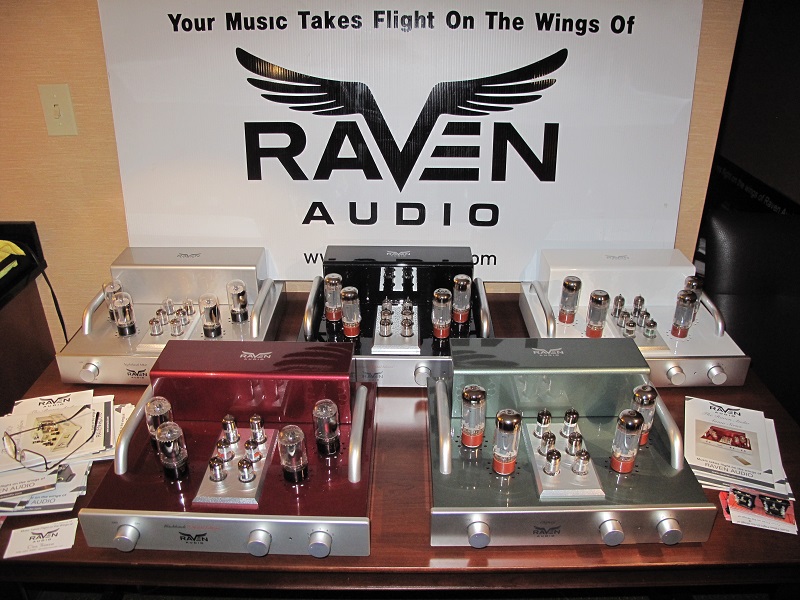
Raven Audio's Avian Series
Found Music and VanZyl Audio
Scott Sheaffer's Found Music and Johan VanZyl's VanZyl Audio joined forces to exhibit their amplifiers and speakers.
My plan to audition and photograph their system on Sunday failed when I arrived to find the room being packed up early. LSAF is open on Sunday but not every exhibitor can arrange to stay open for the third day. As a result these pictures are courtesy Wayne and Kelly Parham.
Seeing the 'naked' version of a Found Music amplifier in those pictures noting it is built with all plastic film caps only adds to my regret over the missed opportunity for an audition. Based on hearing Sheaffer's amplifiers in the Pi Audio room and VanZyl's speakers during previous LSAFs it would have been fun to hear them together. Horn loaded bass plus SET power equals tasty.
If you are into artisan built SET amplifiers and horn loaded speakers Found Music and VanZyl Audio are worth seeking out. So many regrets missing them, I am also told just before breakdown of the room Raven Audio's "The Raven" a 300B integrated which is actually dual single ended 18-watts per channel made an appearance. So many amps, so little time!
Stereo Clarity
Steven Solazzo's Stereo Clarity are experts at delivering the "simplify, simplify" side of the system option. The draped and acoustically treated demo room housing the Stereo Clarity system is a great place to hang out, chill, and enjoy the tunes.
The system's core remains their OneSource media PC model "The Audiophile" with built in power amps driving the Icon Fours tower 3-way speaker system.
Such a system combining a traditional high-end speaker driven by Stereo Clarity's highly capable powered media server delivers in large measures the proverbial best of both worlds. The low distortion, transparent, wide bandwidth, wide dynamic range HiFi the high-end has spent decades developing coupled to the ease of access into large music collections only a media center can provide. Steven demonstrates he is something of a triple threat bringing speaker design, electronics design and information technology talents together in service to the music.
It also must be reported that in addition to Stereo Clarity's outstanding showing Steven Solazzo acts as managing director of LSAF an absolutely critical role for the 100% volunteer produced show.
The No Cone Zone
Mark Sanders demonstrated his enthusiasm for Magnepan by presenting The No Cone Zone.
Mark is awarded my kudos for providing LSAF attendees the chance to experience Magneplanar, the classic panel speaker dipole solution. The Magneplanar 1.7 speakers were driven by a Krell integrated amp sourced from Oppo player and USB disk for music storage.
The resulting sound elicited my typical reaction "with Magnepans sounding this good for such a reasonable cost why not just stop here and call it done"? Perfect example of the fun side of LSAF, with its inviting low cost of entry an individual enthusiast is welcome to take a room and share his favorite system while enjoying music and camaraderie.
Austin Acoustics
In the introduction to this report I discuss the dynamic playing out in HiFi between elegantly simple and large complex systems. Man Nguyen's Austin Acoustics system we had the treat to hear at LSAF 2017 is without a doubt an example of the latter. Twelve electronics chassis, eight speaker drivers, stands and bass enclosures totaling hundreds of pounds of gear all for the single purpose of playing a Compact Disk in stereo.
Twenty years ago when we took our audiophile avocations online accessing the Internet via dial up modems learning of HiFi horizons beyond The Absolute Sound and Stereophile recommended components lists. USENET discussion groups and downloaded images revealed a cadre of fanatical audiophiles in Asia and Europe. They assembled fantastical HiFi systems on a grand scale pursuing exotic technologies, speakers, amps using tubes revived from the earliest days of electrical reproduction; and cost no object artisan built components.
Fast forward to LSAF 2017 and the pictures downloaded last century at 24kbaud are transformed into reality before our eyes in the Embassy Suites Mesquite Room.
The Austin Acoustics realization of this aesthetic I personally found very compelling before I even listened to the system. Here I use aesthetic in its noun form "a set of principles underlying and guiding the work of a particular artist or artistic movement". For this type of ultra-Fi triode horn system those underlying principles start with massive artisan built drive units energized by triode amps directly connected to the drivers. The amps feature tube types selected according to the frequency range being reproduced. Tubes and output transformers are mostly long out of production items of legendary provenance including Western Electric and Tango. The bandpass nature of horns is accommodated by the use of a four-way system so that each horn operates well within its pass band. All electronics are designed by Austin Acoustics the one exception being a rare Accuphase F-25 active crossover; the sought after final analog version before they went DSP for the crossover filters. The midrange and tweeter horn are turned from hardwood blocks, the super tweeter horn from metal. The compression drivers on those horns feature magnets sized somewhere between massive and epic. Bass is reproduced by a generously sized direct radiator enclosure. The bass enclosure, horn brackets, and rack are made from thickly layered cabinet grade plywood. The electronics' enclosures are copper sheet. With materials selected considering musical properties as the primary criteria the finishes on the metal work and wood celebrate the materials' properties rather than strive for maximum shiny.
Judging the sound of the Austin Acoustics system I found challenging. True to its Asian ultra-Fi aesthetic many of the CDs in Nguyen's show selection are rare special editions of both western and Asian stringed instruments featuring unfamiliar repertoire. When the volume was set too high on this material it could sound strident. Given the system's price tag well into six-figures some will find that immediately damning. I tend to excuse it given the extreme high resolution offered when attempting facsimile reproduction if set too loud a violin is going to sound cutting. The performance first all else second aesthetic of this system is not intended to apply a patina of lovely colorations onto all the music it reproduces. When it was my turn to select a demo cut I went with the familiar, Miles Davis' masterwork Kind of Blue. As the music started it sounded Ok, quite good in fact. However I was blocked in my listening due to the system's size, complexity, and cost. All of those metrics much larger than I am accustomed that reality standing between me and the music. So I closed my eyes, cleared my mind, and just listened.
At its best HiFi brings us moments of musical transcendence when the artifice of the recording and reproduction technologies falls away and the music is just present. When I started in HiFi in the 1970s 'presence' was a common positive adjective applied to good reproduction. Presence is the word that comes to mind as I recall how Man Nguyen's Austin Acoustics system conjured an image of Miles Davis and his horn in front of me that afternoon. He was there as if he had stepped into the spotlight and I heard deep into his horn and how he manipulated it to make the sound to make the music to deliver the emotion of the art. And then it was over as my undisciplined mind interrupted insisting there are more rooms to cover and then we must hurry to return to open my room back up for more visitors. For the moments I was able to ignore my over packed agenda and settle into the experience special musical things were happening in front of the Austin Acoustics system.




